This post may contain affiliate links to tours and hotels. These help us earn a small commission at no additional charge to you.
Take a step back in time at Gyeongju Gyochon Traditional Village, a historic hanok chock full of live demonstrations, cute cafes and courtyards plus one of the best places to pose in hanbok dress.
Originally established in the 7th century and recreated over the years, this small but sublime slice of South Korea life from yesteryear is one of the most popular things to do in Gyeongju.
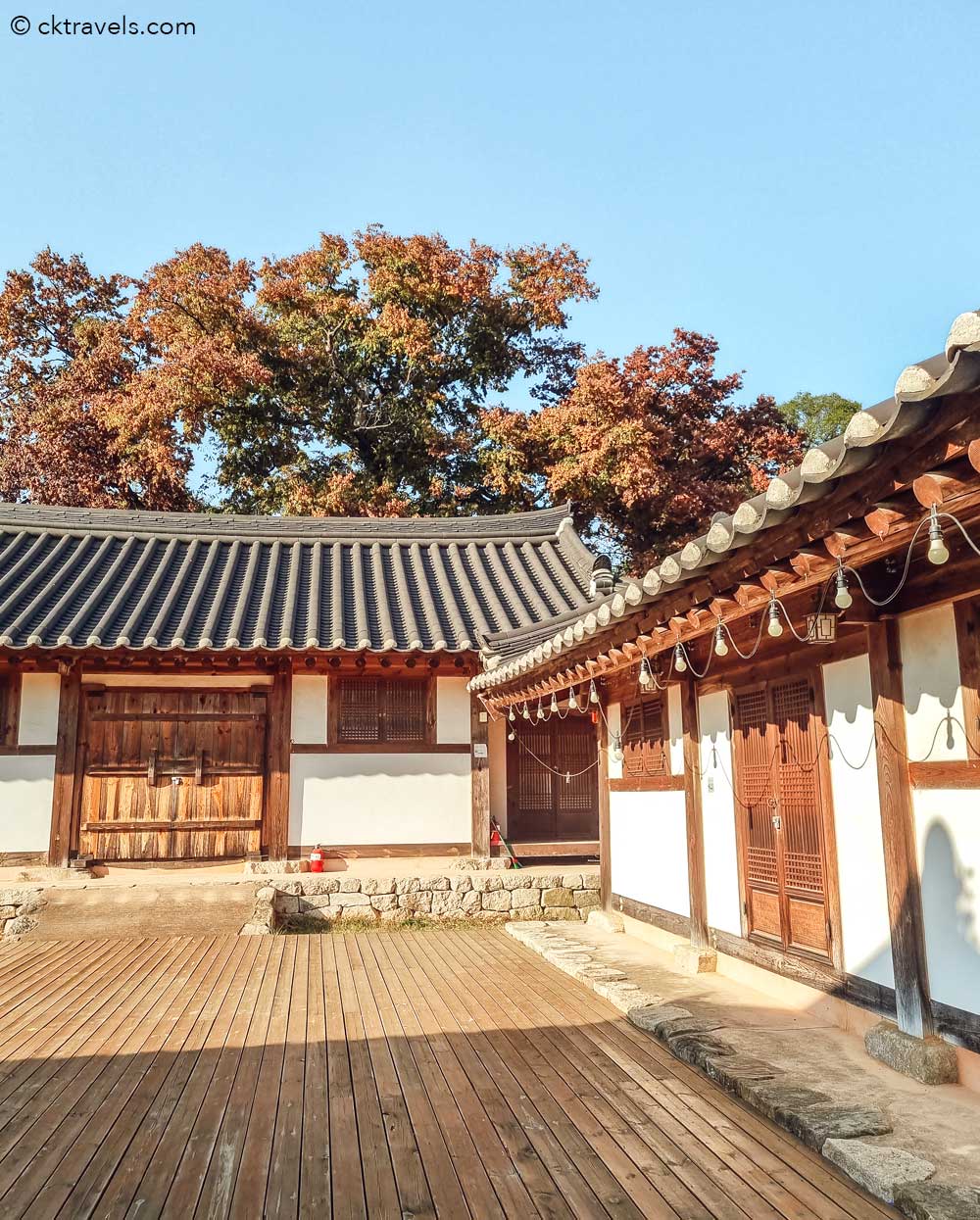
Even if you don’t fancy doing any of the hands-on activities or sit down restaurants, Gyeongju Gyochon Traditional Village is a pleasant place to walk around and combine with nearby Woljeong Bridge and the Namcheon Stream stepping stones.
From kimchee to noodle making, live performances to food and drink, here is our ultimate guide to Gyeongju Gyochon Traditional Village in Gyeongju, South Korea:
Table of Contents
How much is Gyochon Traditional Village to visit?
The Gychon traditional village in Gyeongju is free to visit with no admission fee. However, many of the centres in the village charge additional fees such as 10,000 Won for noodle making or 15,000 Won for the kimchi class.
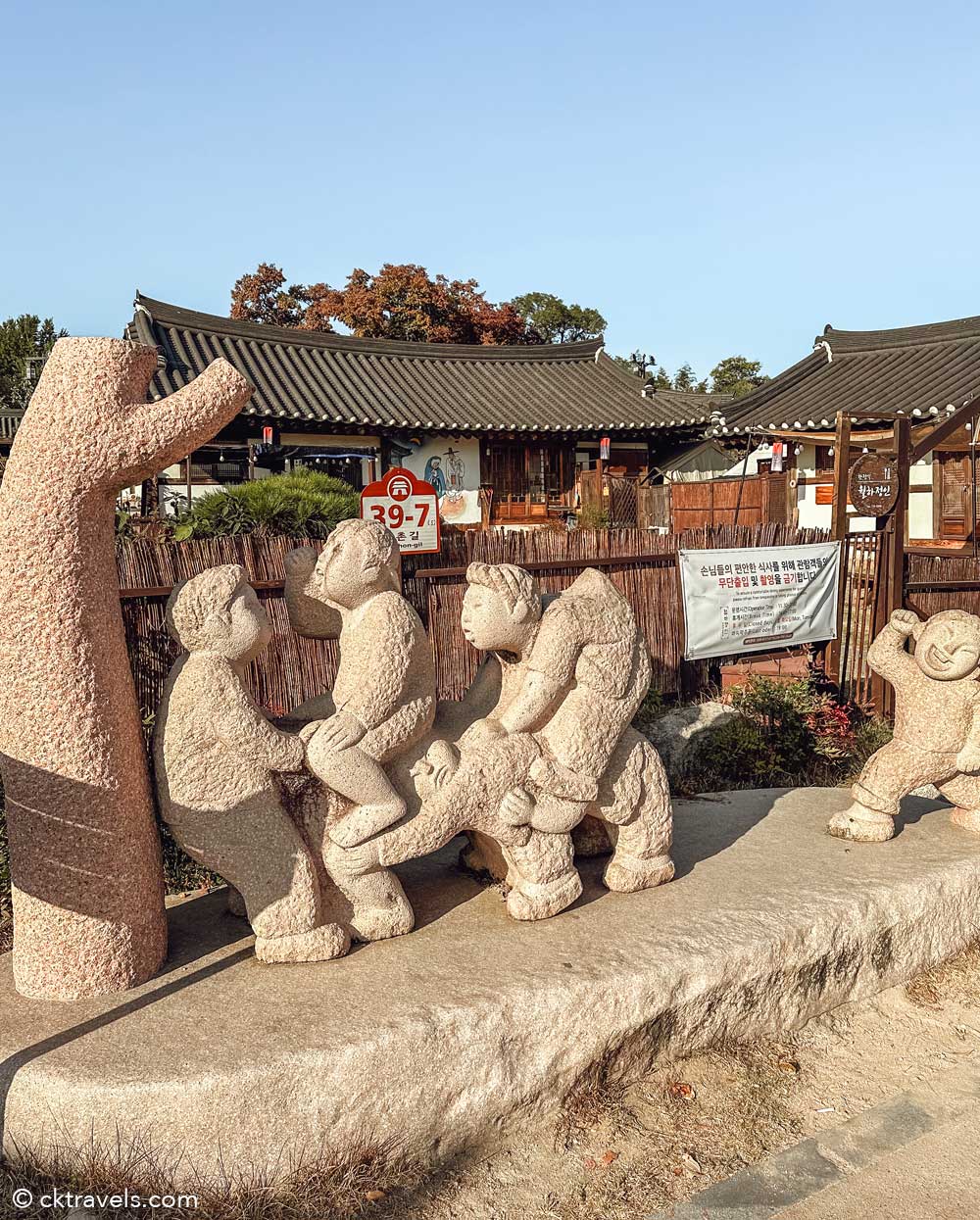
You might like – How to get from Busan to Gyeongju by bus (with prices) >
What are the Gyochon Traditional Village opening hours?
Gyeongju’s Traditional Korean Village is open daily from 9am to 6pm (although hours may differ during public holidays and festivals).
As it is an open air site, you can walk around the village outside of these hours (24 hours) but all the buildings will be closed.
Note that whilst the Gyochon Traditional Village is open seven days a week, some (but not all) experiences (like the fermented food experience center) close on Mondays and Tuesdays.
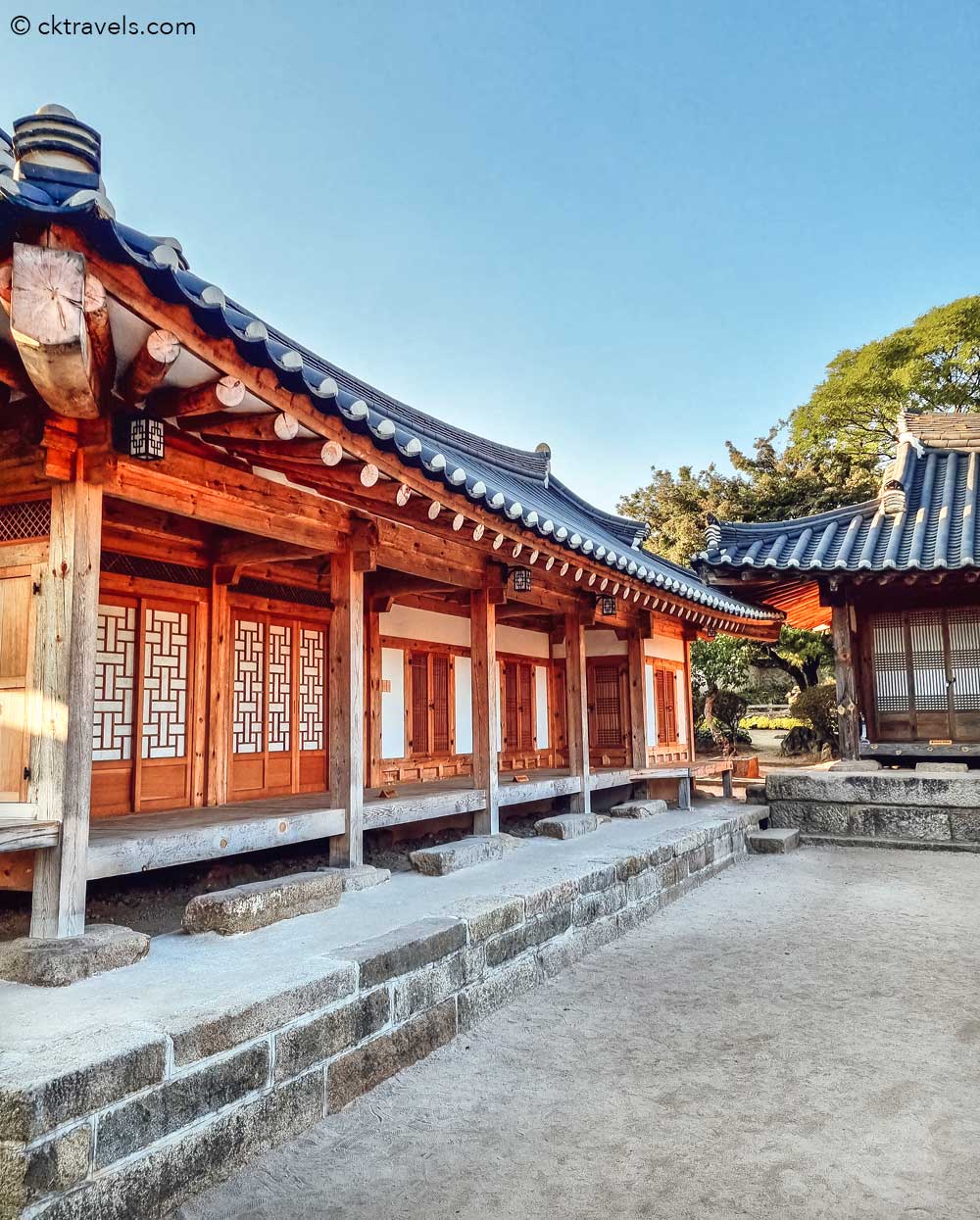
You might like – Things to do in Busan, South Korea >
Gyeongju Gyochon Traditional Village history
So how old is the original Gyochon Traditional Village History? One of the oldest settlements in Gyeongju, Gyochon Village is where the ‘gukhak’ (the present-day National University) was established in 682 AD during the Silla Period (although most of the buildings today are more modern recreations).
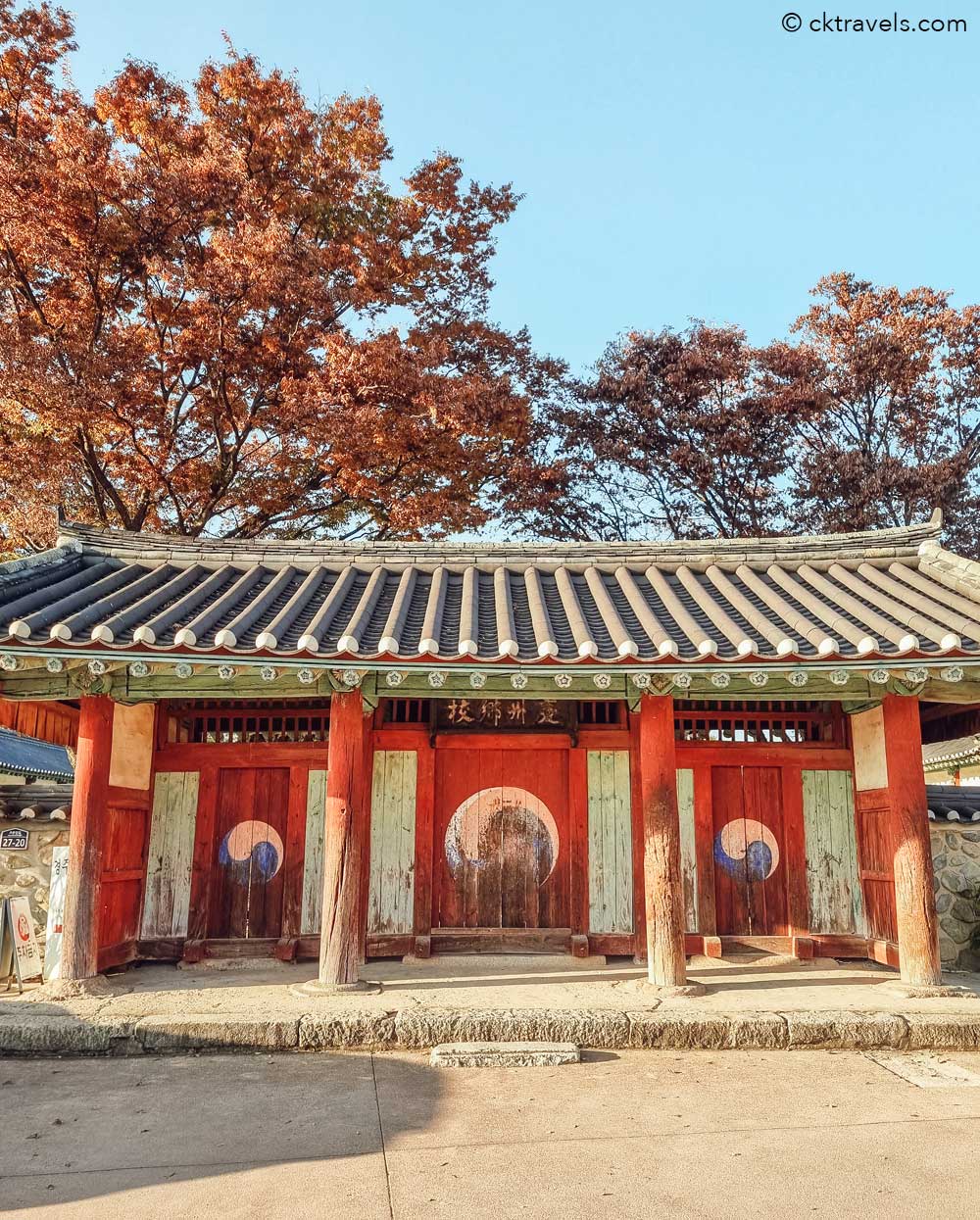
The learnings and lessons taught here have been passed down by generations and local educational establishments. Gyochon, the name of the traditional Korean Village originated from a village that contained a hyanggyo (a Government run state school).
Today, the Gyochon Traditional Village continues the tradition of learning and Korean culture through several hands-on experiences and classes plus has several traditional Korean restaurants and hanok style restaurants on site.
Try this – Gyeongju UNESCO World Heritage Sites and History Full-Day Tour >
Things to do at Gyeongju Gyochon Traditional Village
There are many activities, classes and cooking experiences to take part in at Gyochon Traditional Village. Some of the most popular things to do and activities include:
Hanbok rental
Many visitors hire hanboks and traditional Korean costumes whilst exploring the village.
Hanbok style clothing has been around for over 1,500 years and a popular family activity in Gyeongju is to dress up and take pictures in the historical village and nearby at the Woljeong Bridge. Some families even hire professional photographers (fancy!).
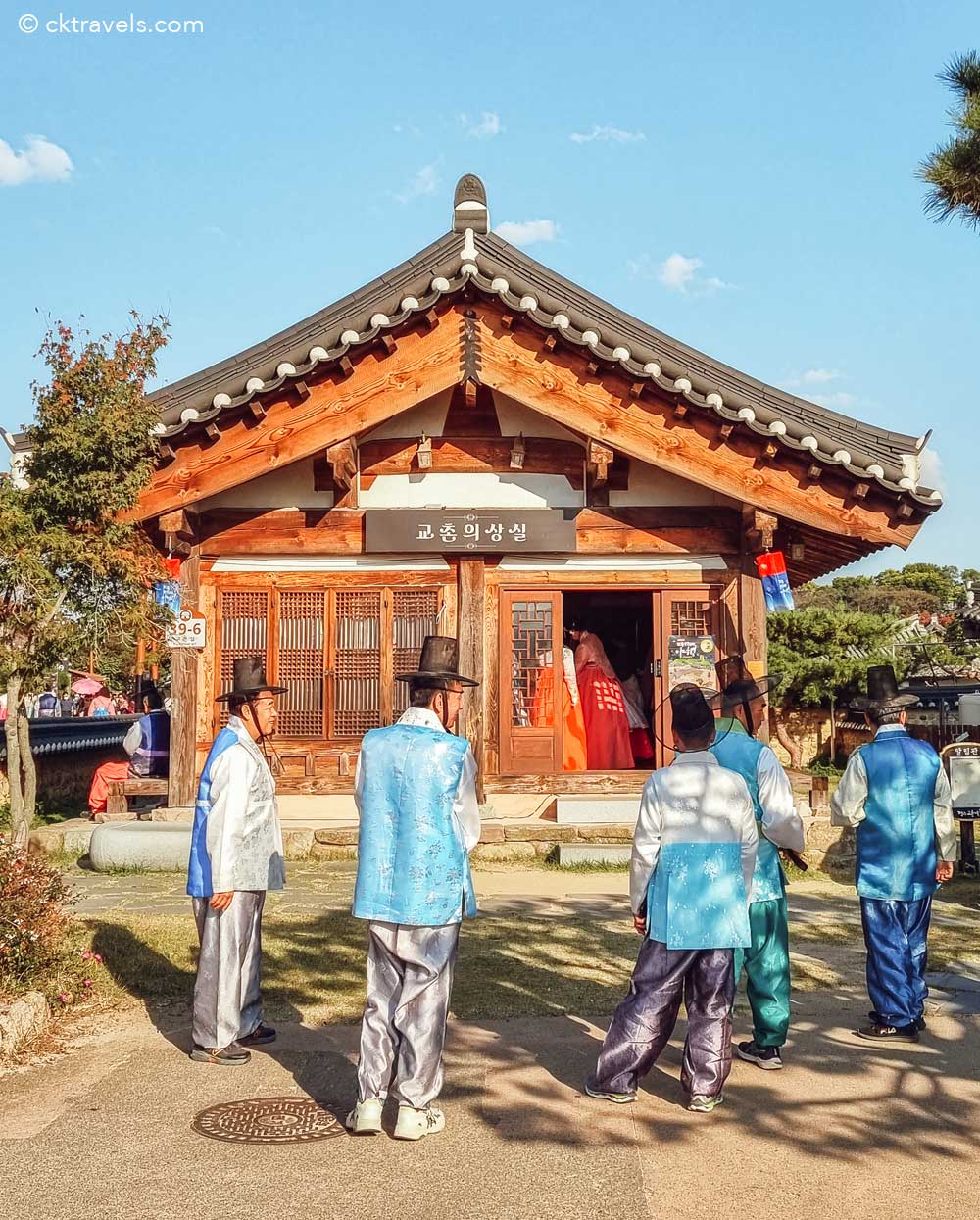
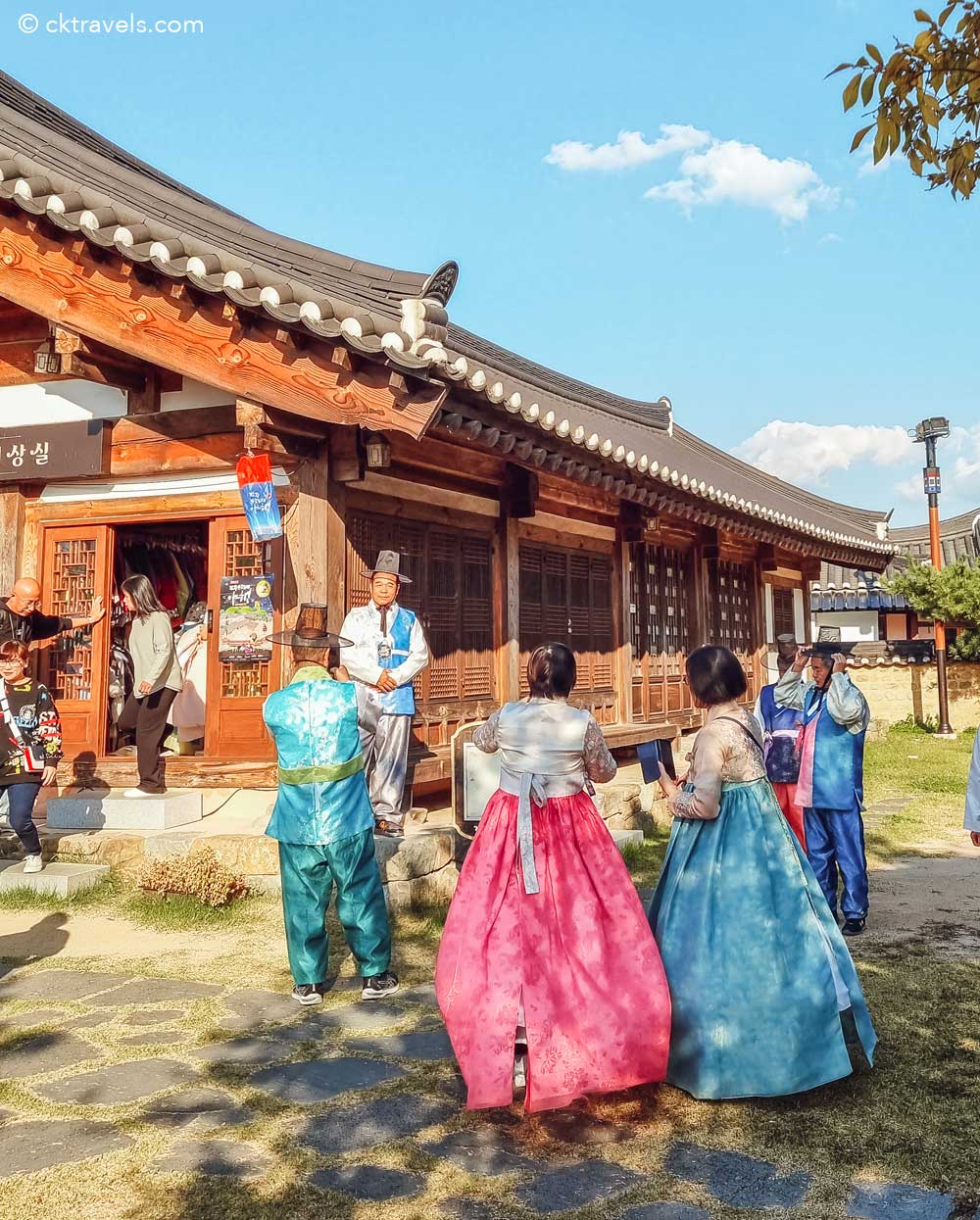
You might like – Things to do on Jeju Island, South Korea >
The fermented food experience center (AKA kimchi making)
These are paid for workshops where you can learn to create your own fermented and pickled products. Or you can purchase pre-made kimchi made in the traditional way with prices starting at 10,000 Won per 500g.
Even if you don’t want to try or buy kimchi, the kimchi fermentation pots out front are a great photo spot and here you can also try traditional Korean games for free like archery – the yard is home to one cute golden retriever dog too!
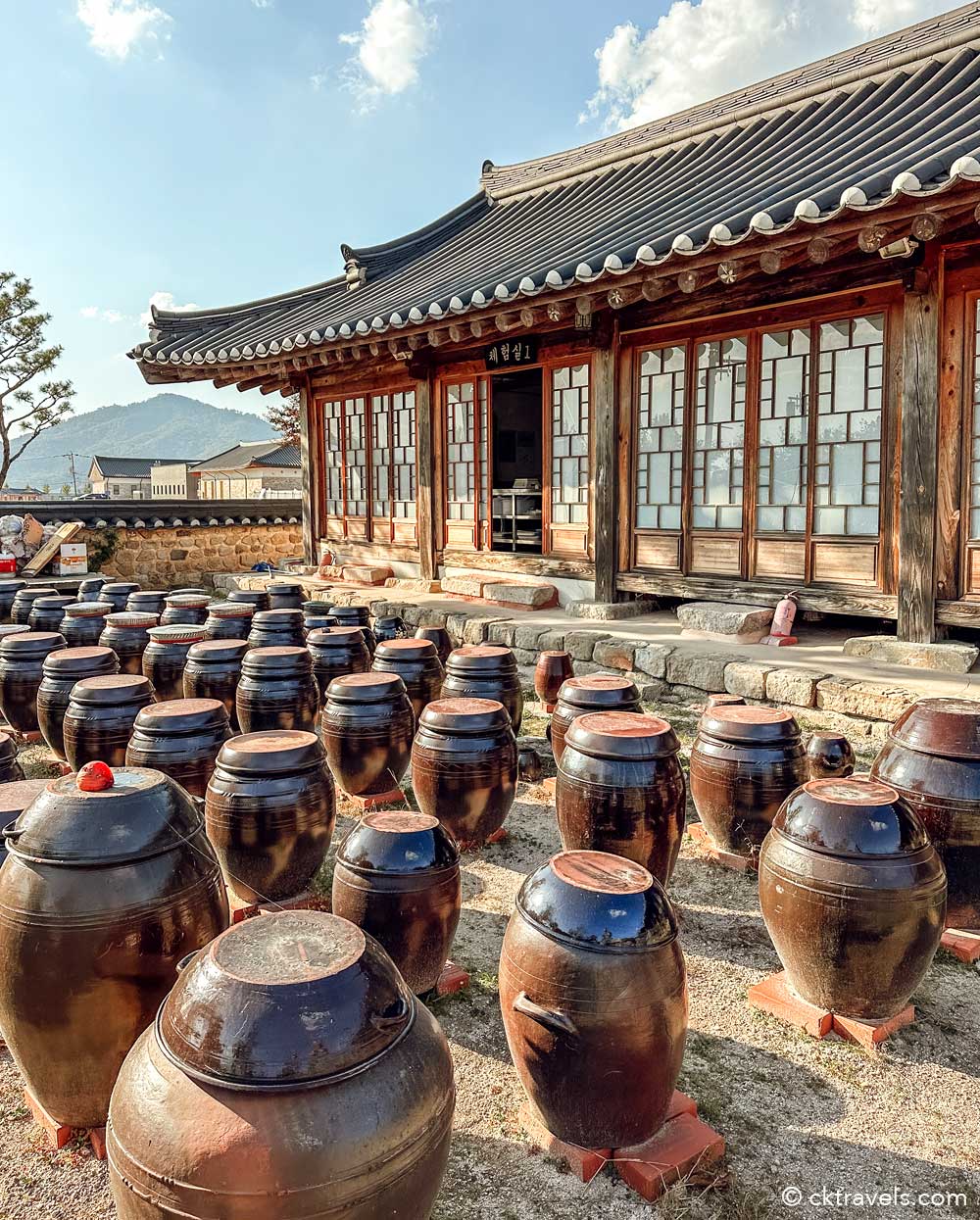
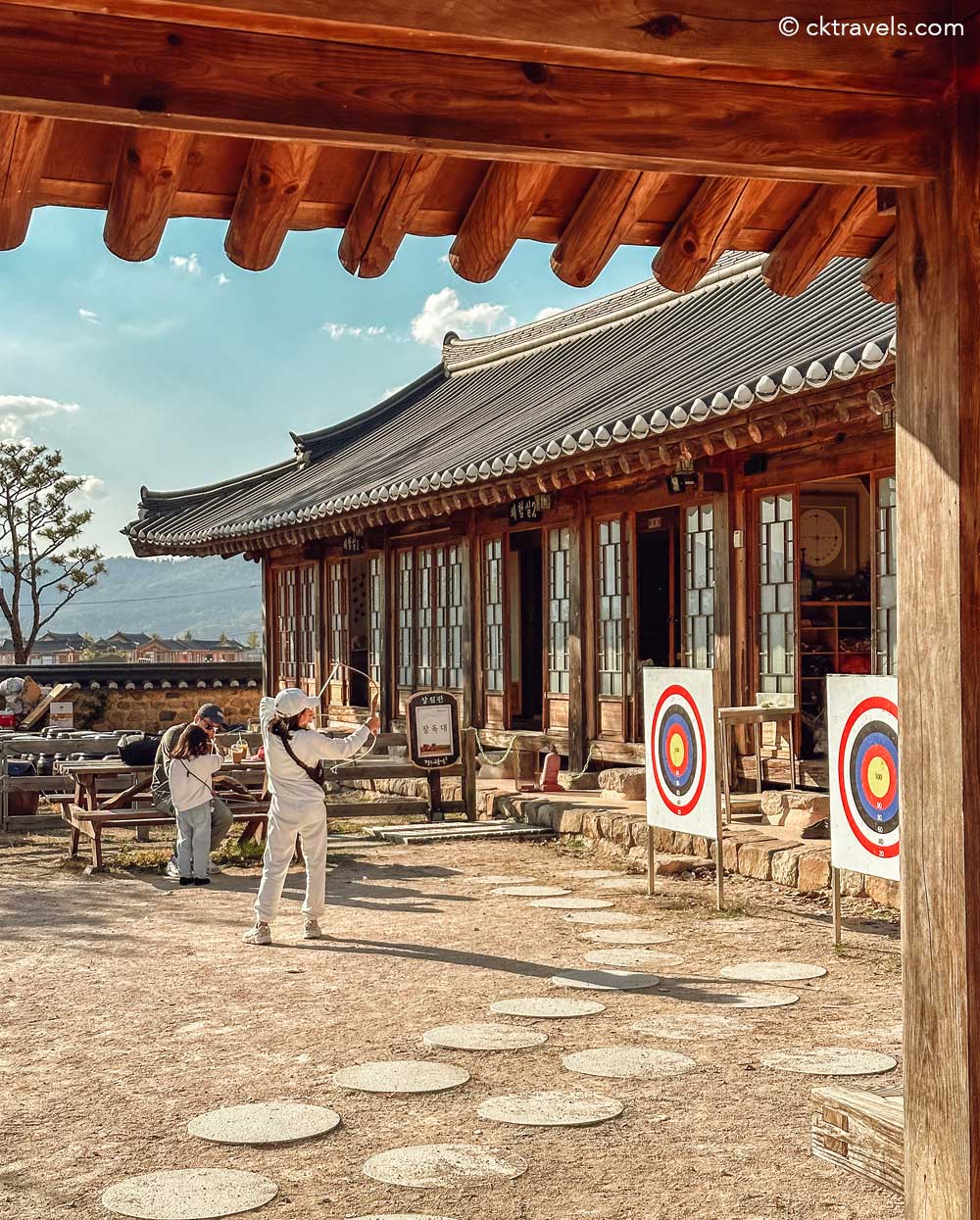
You might like – things to do in Seoul, South Korea >
Live music and cultural performances at Gugak Performance Hall
We visited Gyochon Traditional Village a couple of times whilst staying in Gyeongju and at the weekend, we stumbled across a free musical performance.
Several musicians had set up in a charming courtyard (Gugak Performance Hall) playing traditional Korean musical instruments and wearing hanbok.
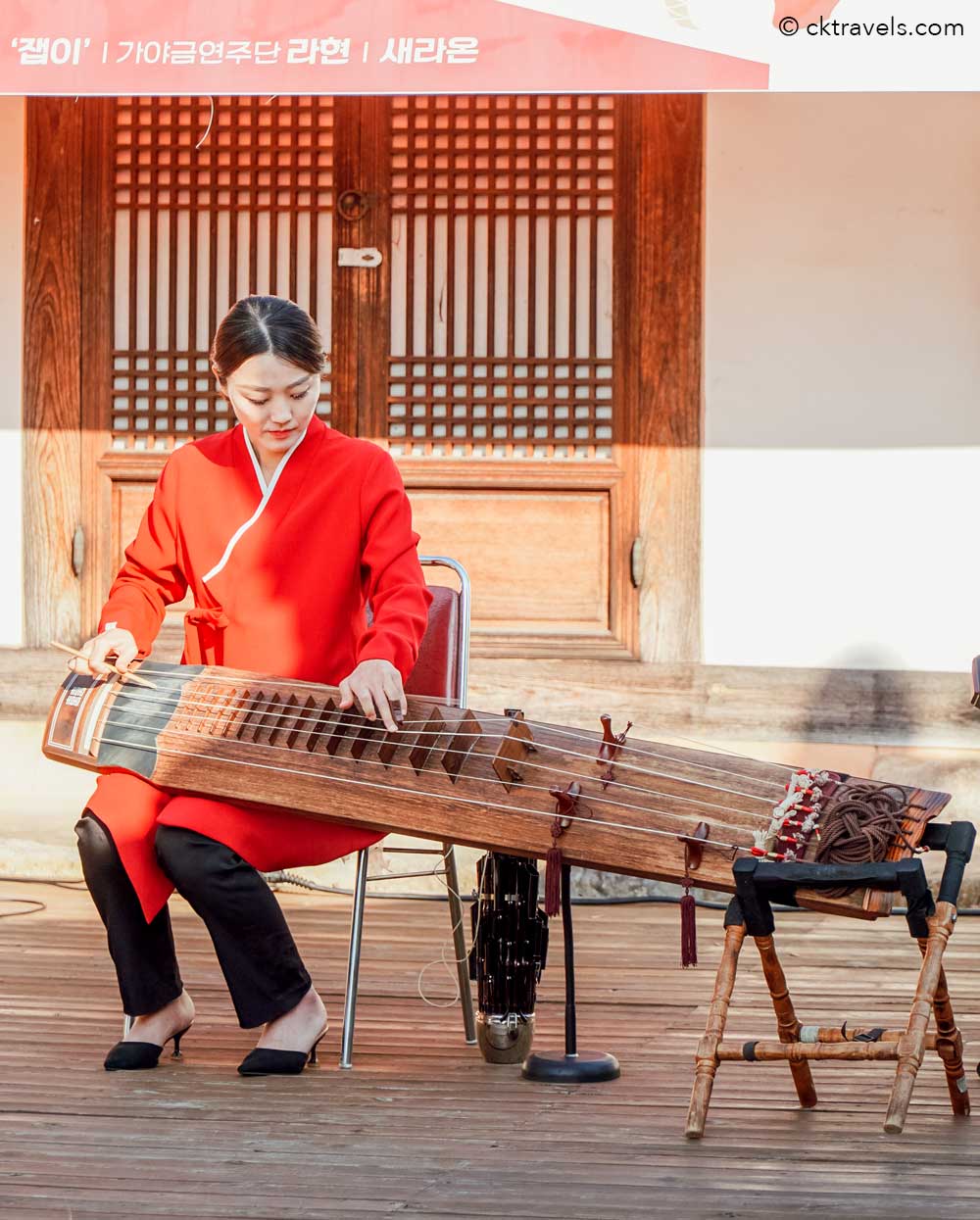
The setting was stunning, the music was serene and better yet, it was free to watch the performance.
We couldn’t see a sign or announcement anywhere for the performance other than at the front of the stage so all we can suggest is that if you hear music or singing whilst in the village, just follow the sounds.
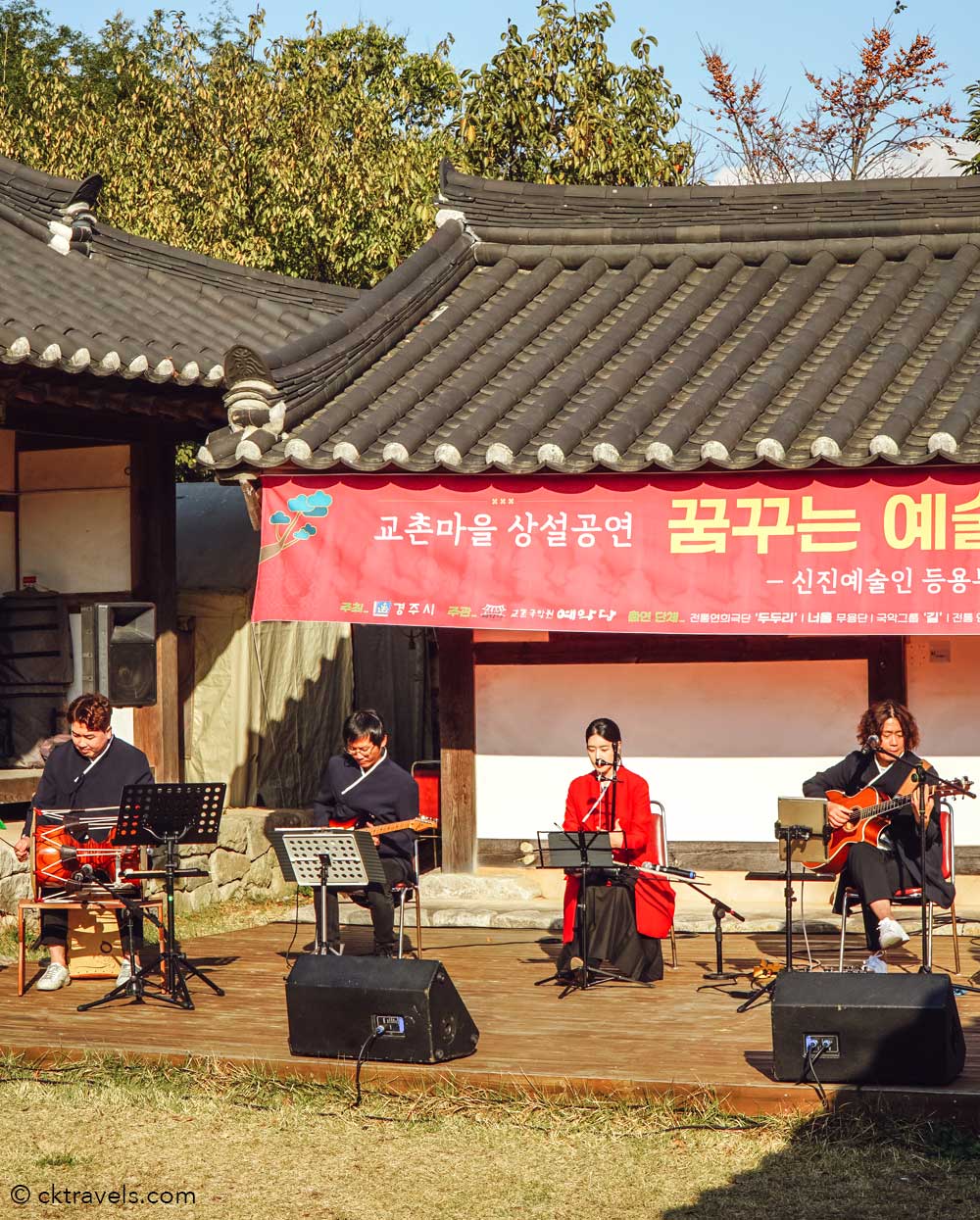
You might like – best South Korean street foods to try >
Korean earthenware centre (Hanguk Togi)
Alas this was closed for refurbishment when we visited Gyochon Traditional Village but this is a ceramic and pottery museum and showroom where you can buy beautiful earthenware and see exquisite examples in display cases.
At the earthenware store, you can also sketch onto your own mug to take home (11,000 – 13,000 Won) or add your own unique flourishes to a variety of ceramics from plates to ramen bowls.
Try this – Busan + Gyeongju One Day Tour from Busan >
Noodle making classes
Use your noodle and try your hand at making this classic Korean dish – prices start from 10,000 Won per session but classes must be booked in advance via the Naver app
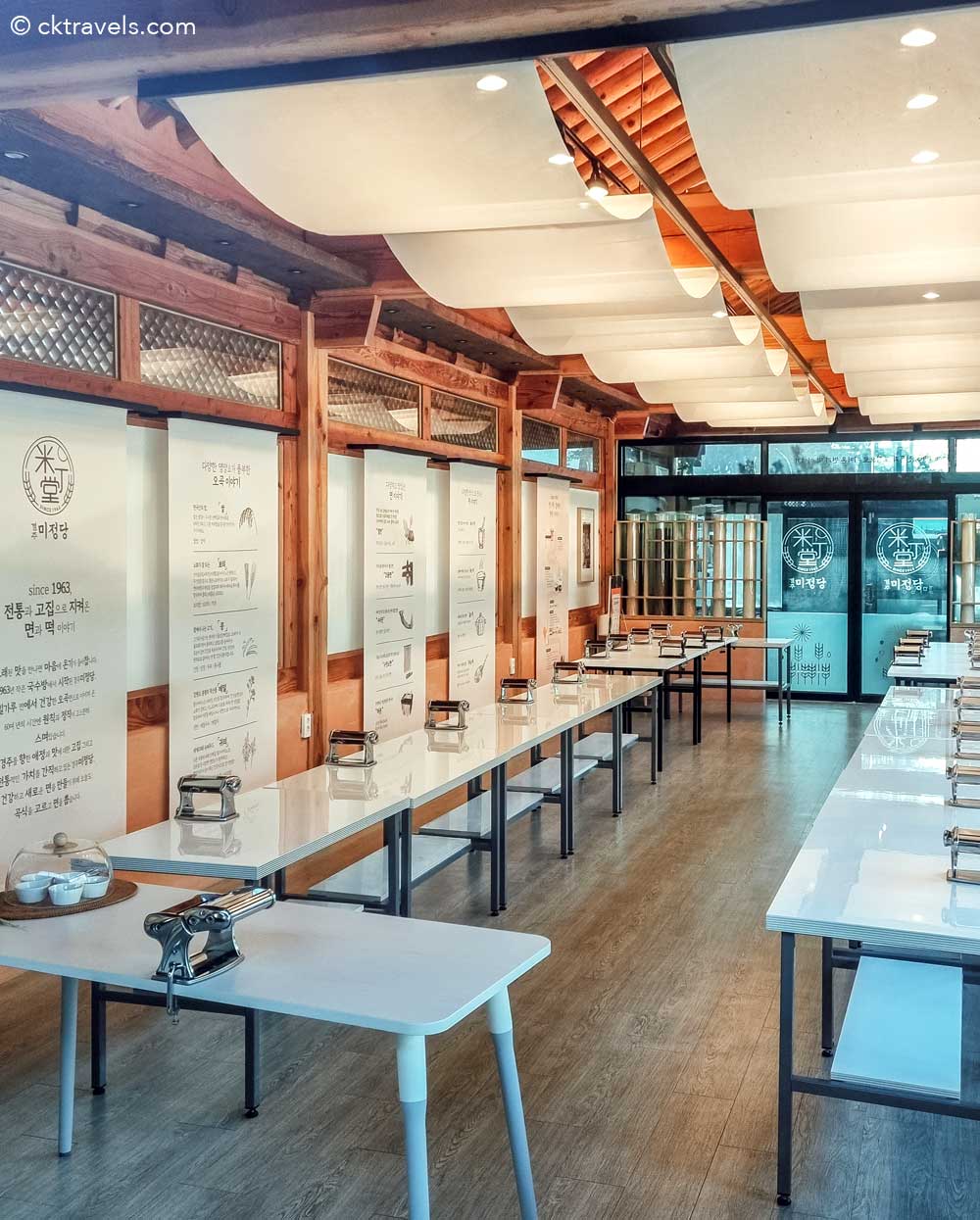
You might like – Ikseon dong Hanok Village in Seoul >
Gyeongju Gyochon Traditional Village Museum
There is a free to visit museum open from 9am to 6pm which has old images of the village in terms of how it used to look plus scale models and artefacts recovered from the site.
The museum is quite small consisting of two rooms and all the interpretation is in Korean (so Google Translate may be in order if you want to visit.
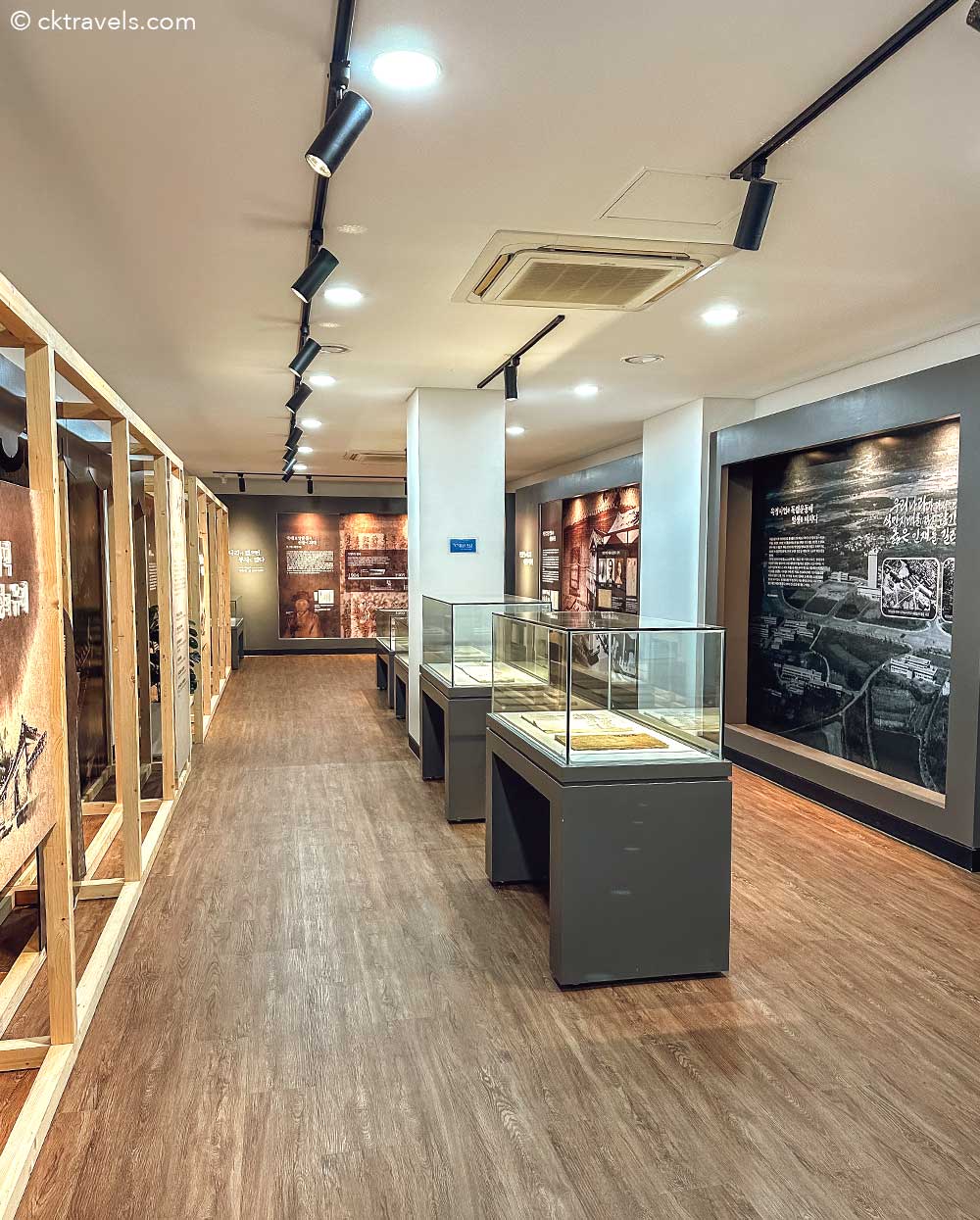
You might like – Guide to the things you can buy in South Korea Daiso stores >
Historic House of ‘Rich Man’ Choe
Another free to visit attraction here, the historic house of ‘Rich Man’ Choe is situated next to the Namcheon Stream.
This was the former residence of the Choe family, who had enormous wealth for over twelve generations but also known for their ‘ethical approach’ to life and neighbourhood spirit.
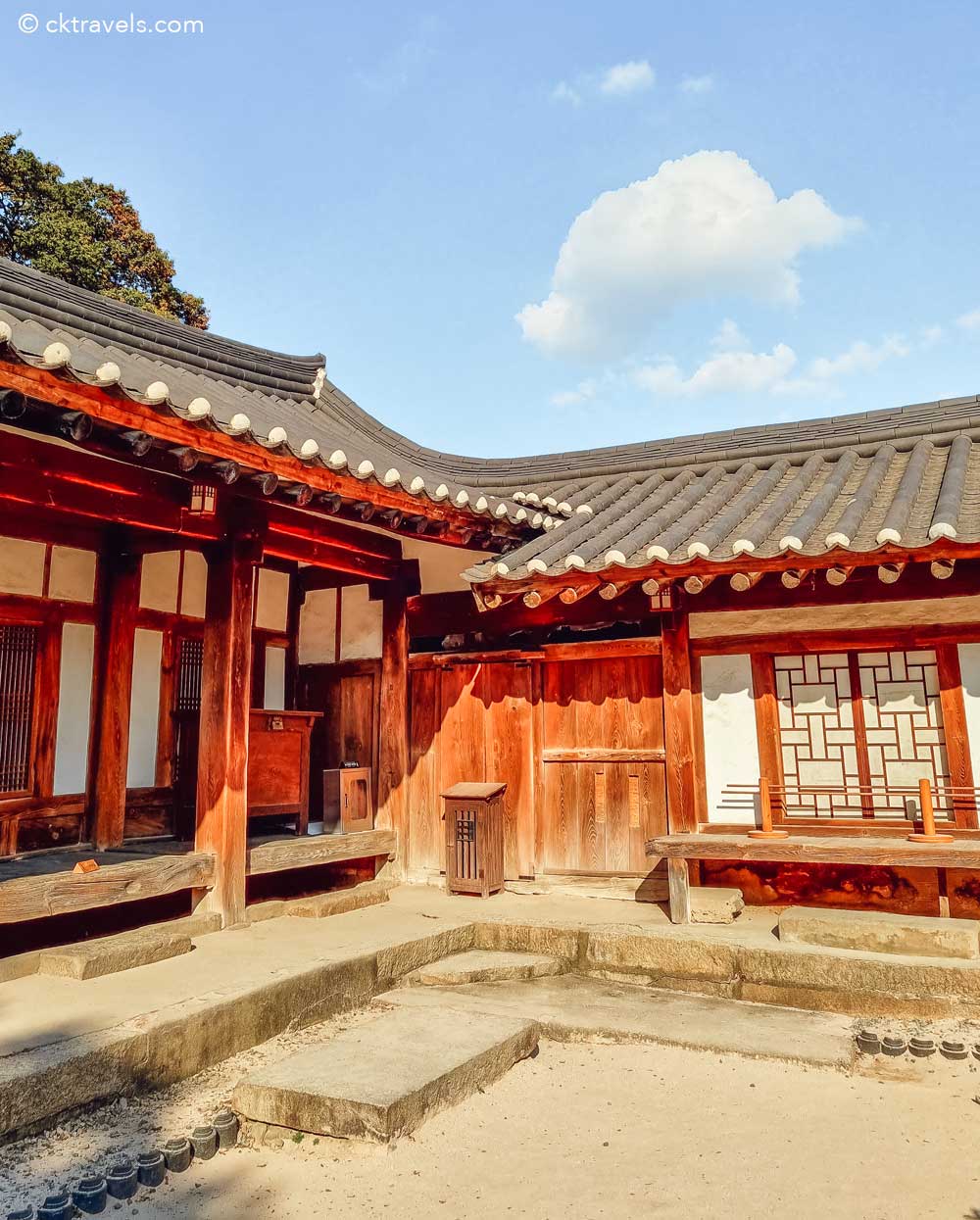
The Rich Man Choe house was built in 1779 and includes a shrine and storehouse in its not inconsiderable grounds – definitely one of the most interesting properties and courtyards to explore in Gyochon Traditional Village.
Rice cake making performances
One of the Gyochon Traditional Village cafes (Kyochon Garam) hosts regular rice cake pounding performances between 11am and 4pm (and you can even take part yourself if you purchase rice-cakes).
Made in the traditional way, Korean rice cakes are made by hitting the doughy consistency with very huge hammers – it is so much fun to watch!
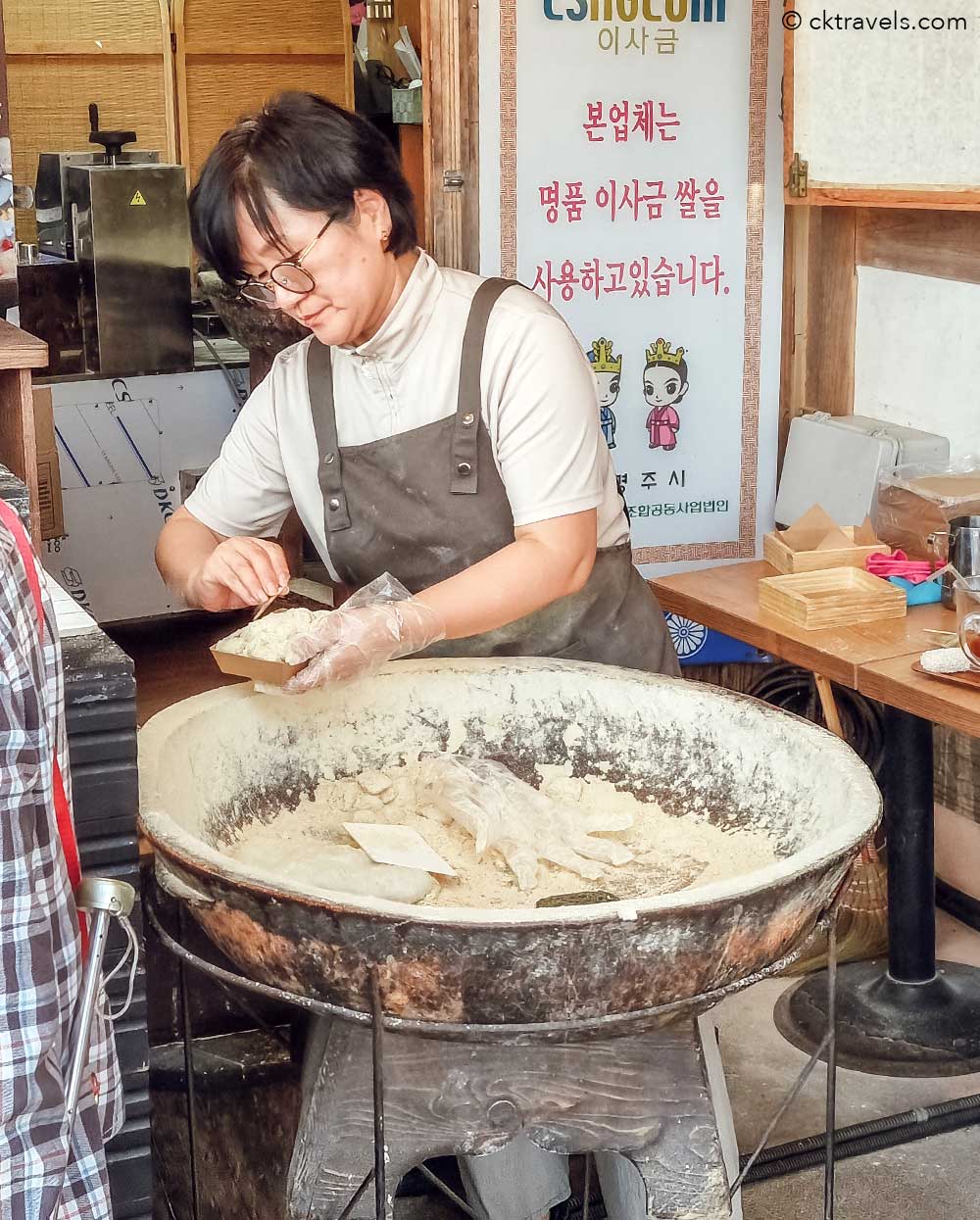
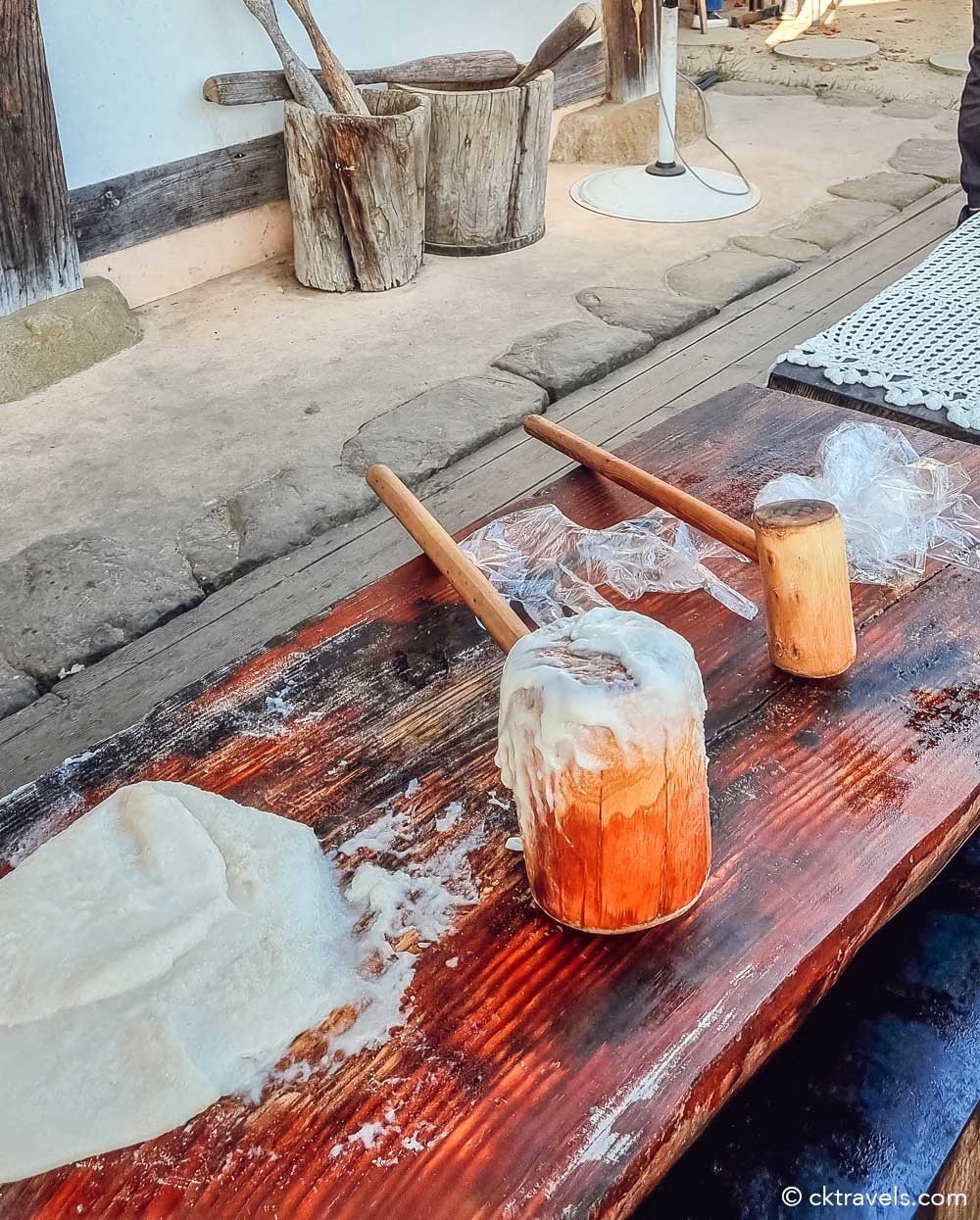
You might like – the best things to do in Busan at night >
Food and drink at Gyochon Traditional Village
There are around a dozen or so cafes and restaurants at Gyochon Traditional Village, many of which are in historic hanok style buildings with cute courtyards or green gardens. Also onsite is a convenience store and a few vending machines selling soft drinks.
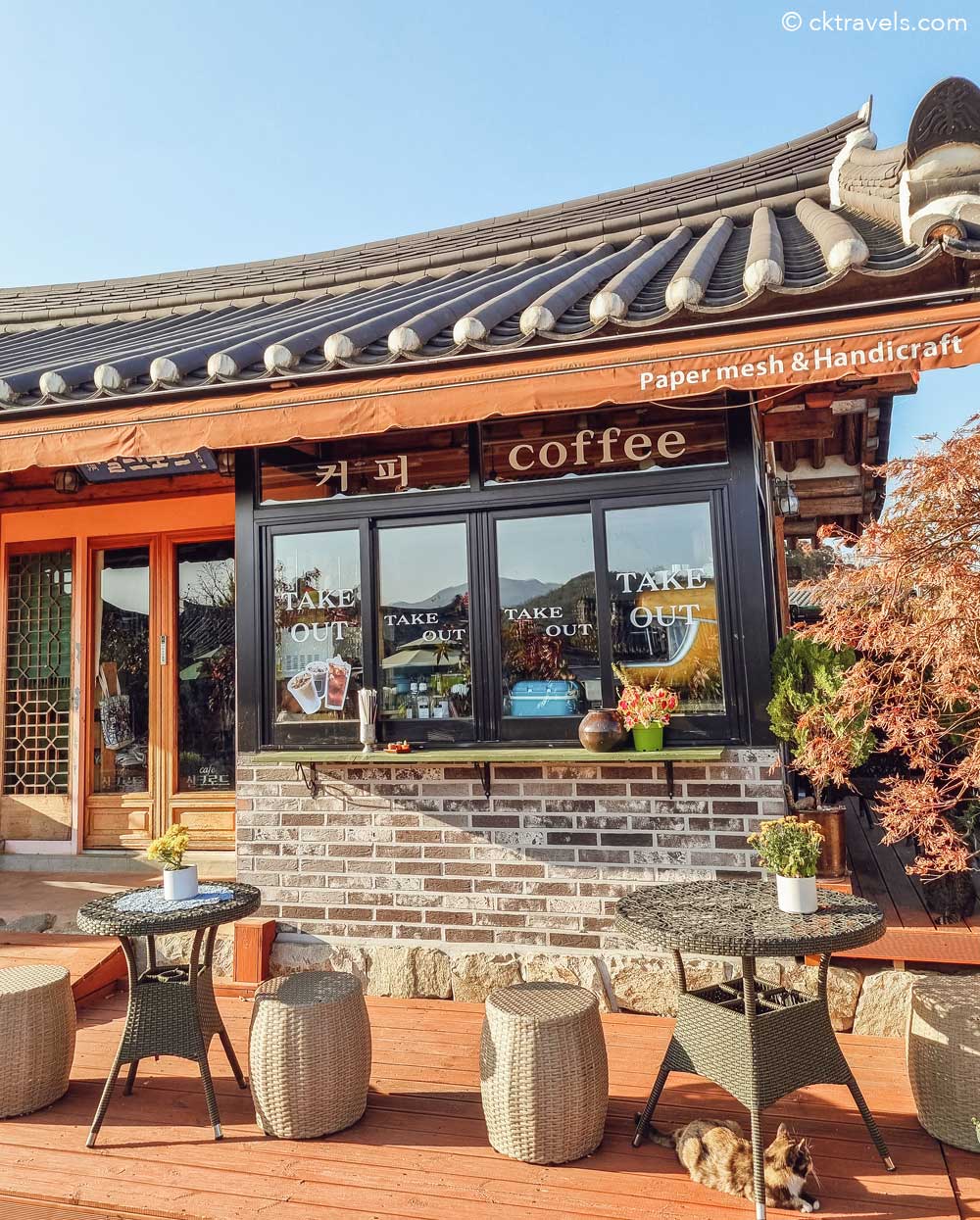
We found most of the restaurants and cafes Gyochon Traditional Village were selling food at a premium but given entrance to the village is free and they need to fund it / make money somehow, this goes with the territory.
And the semi-historic setting makes it a unique setting compared to most restaurants and coffee shops in town.
Some of the restaurants and cafes at Gyochon Traditional Village include:
Jinsusungchan restaurant
The nicest looking restaurant in the whole village complete with a gorgeous garden setting (popular for hanbok photography), the Jinsusungchan restaurant has set menus starting from around 30,000 Won like soy sauce marinated Crab or bulgogi.
Lighter less expensive dishes include bulgogi or Korean beef yukhoe bibimbap (both 15,000 Won) or in the summer months, Korean beef raw fish soup (also 15,000 Won).
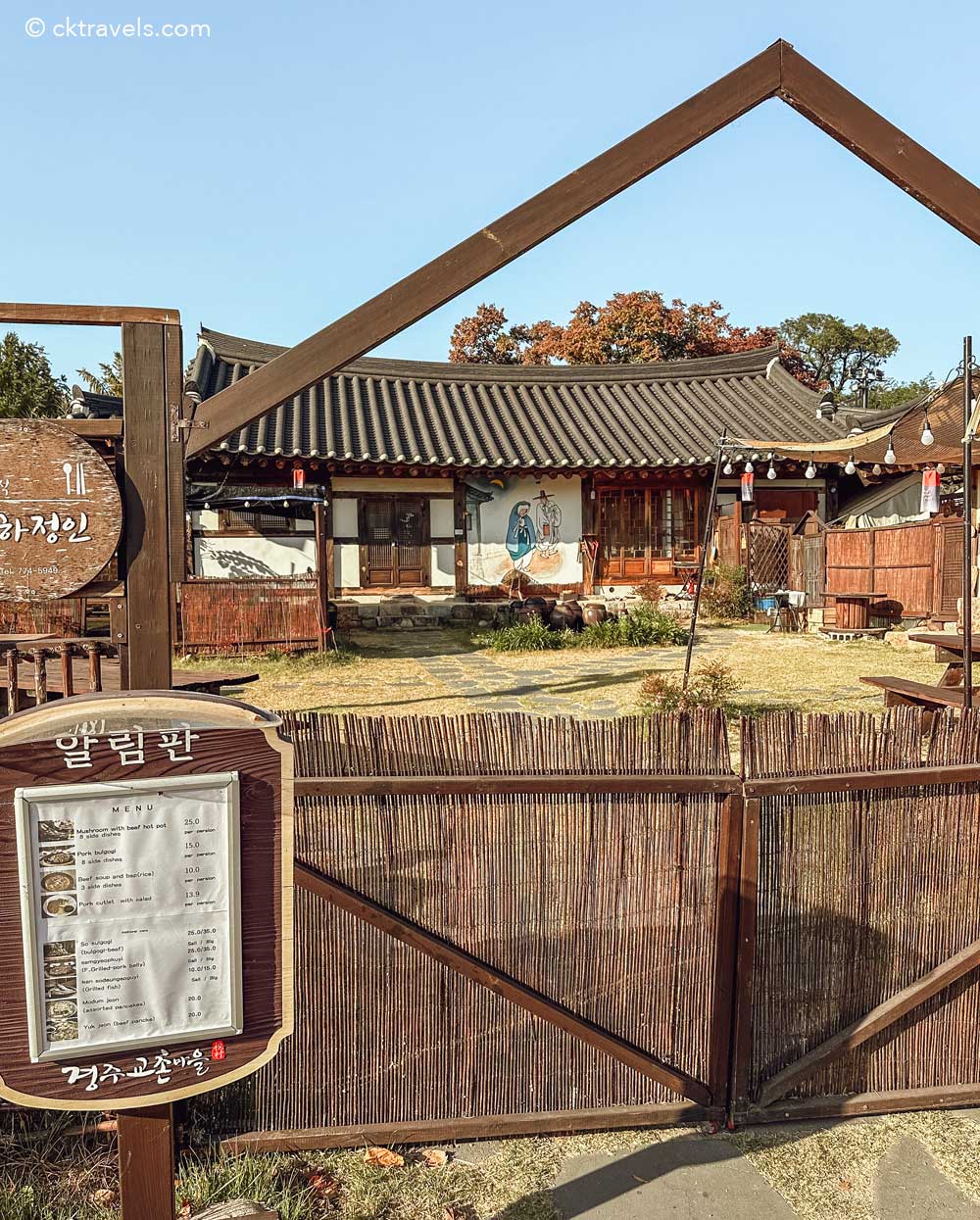
Try this – Full day Private Gyeongju UNESCO Heritage Tour >
Cafe Dayeon
Korean traditional cafe selling classic beverages like quince tea, jujube soup or homemade yoghurt.
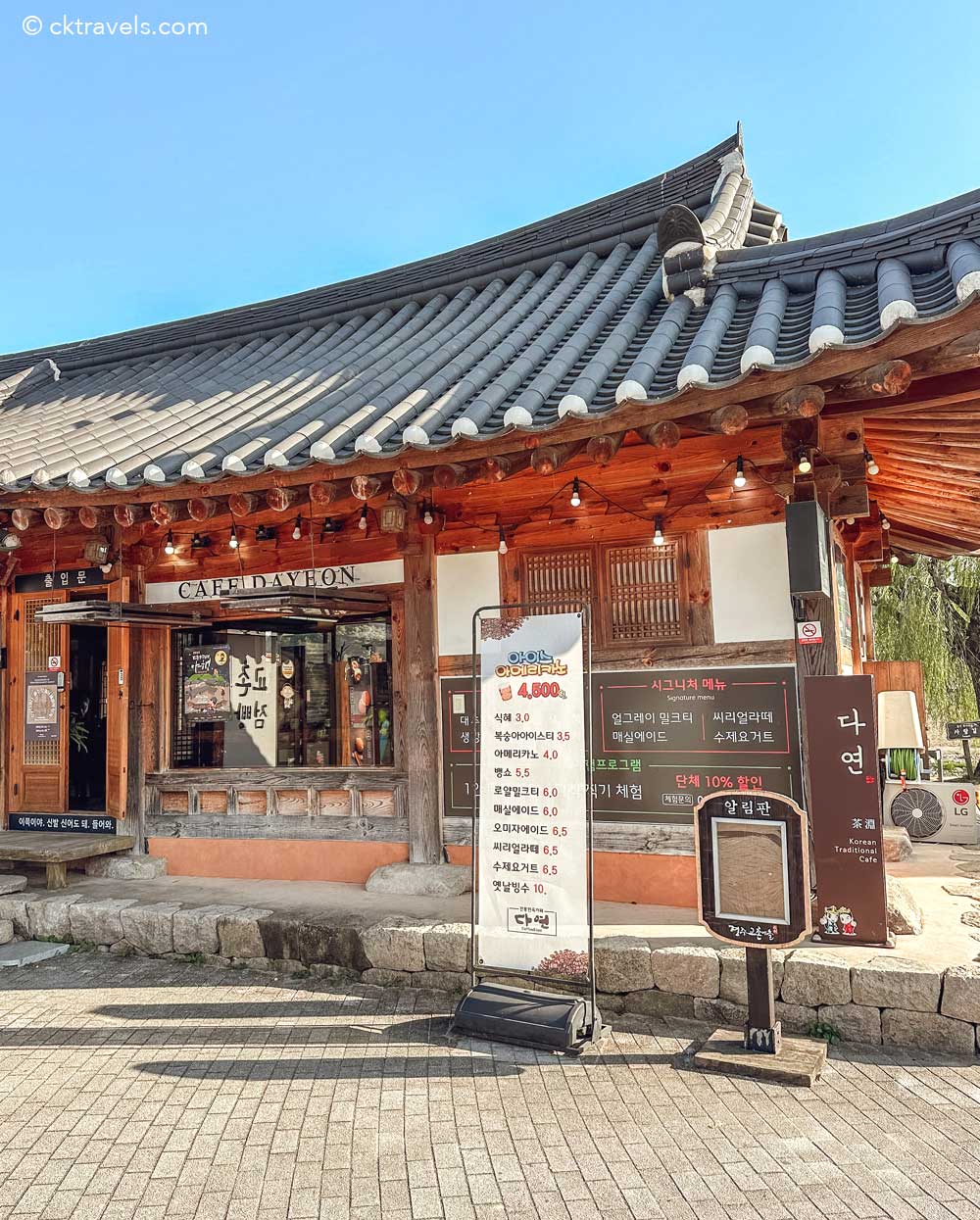
Gimmijeongdanggochan Barn
One of the cheapest restaurants at Gyochon Traditional Village in Gyeongju, here you can get rice noodles with black bean sauce for 6,500 Won or chewy rice noodle soup with fried tofu for 8,000 Won.
Cold noodle soup dishes are also available in the summer for around 8,000 Won.
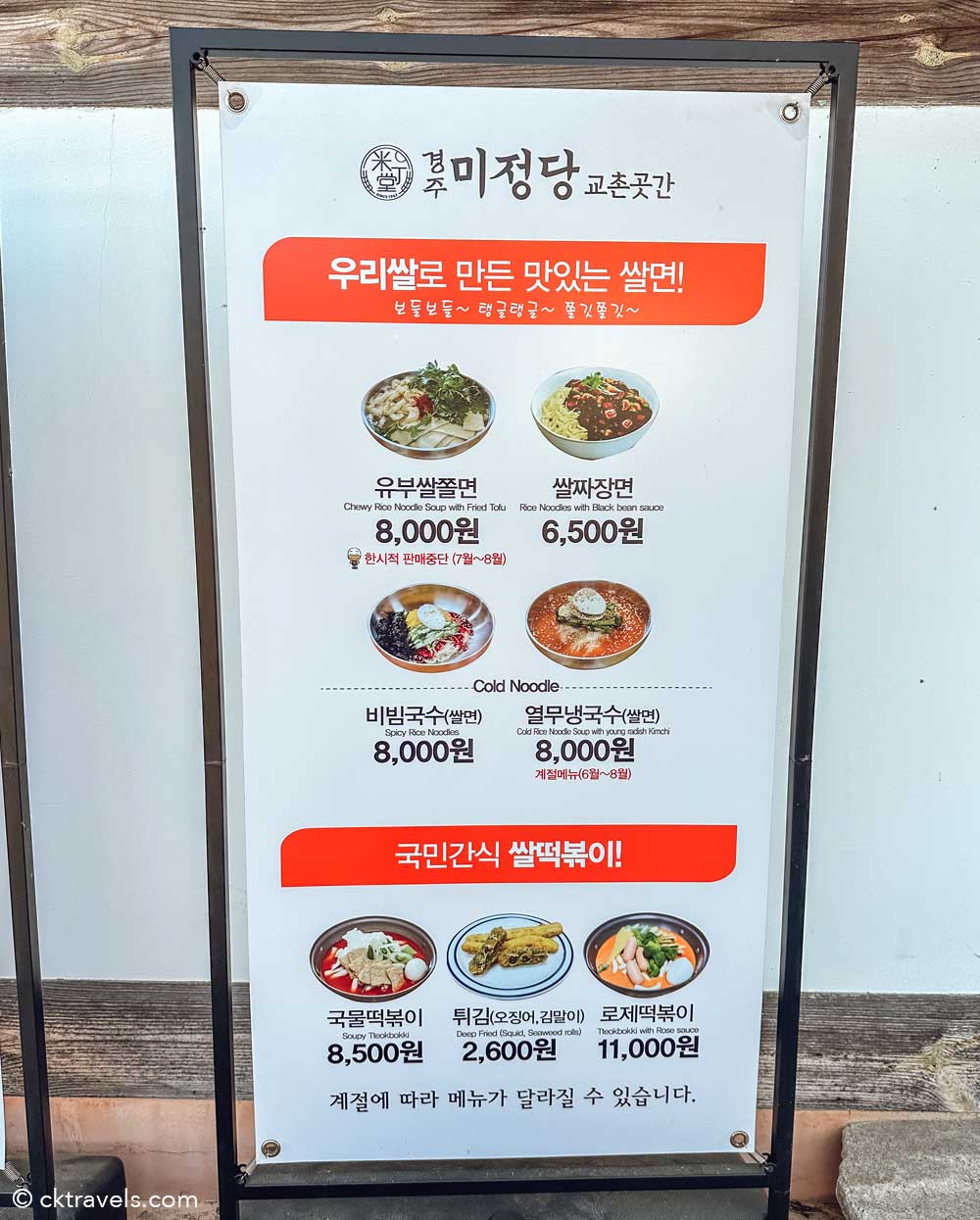
Al Cheon Korean cuisine restaurant
Hot pot style dishes starting from 10,000 Won per person, or pork cutlets with salad for 13,900 Won.
Al Cheon Korean cuisine restaurant has a nice courtyard (but was closed when we visited one Monday).
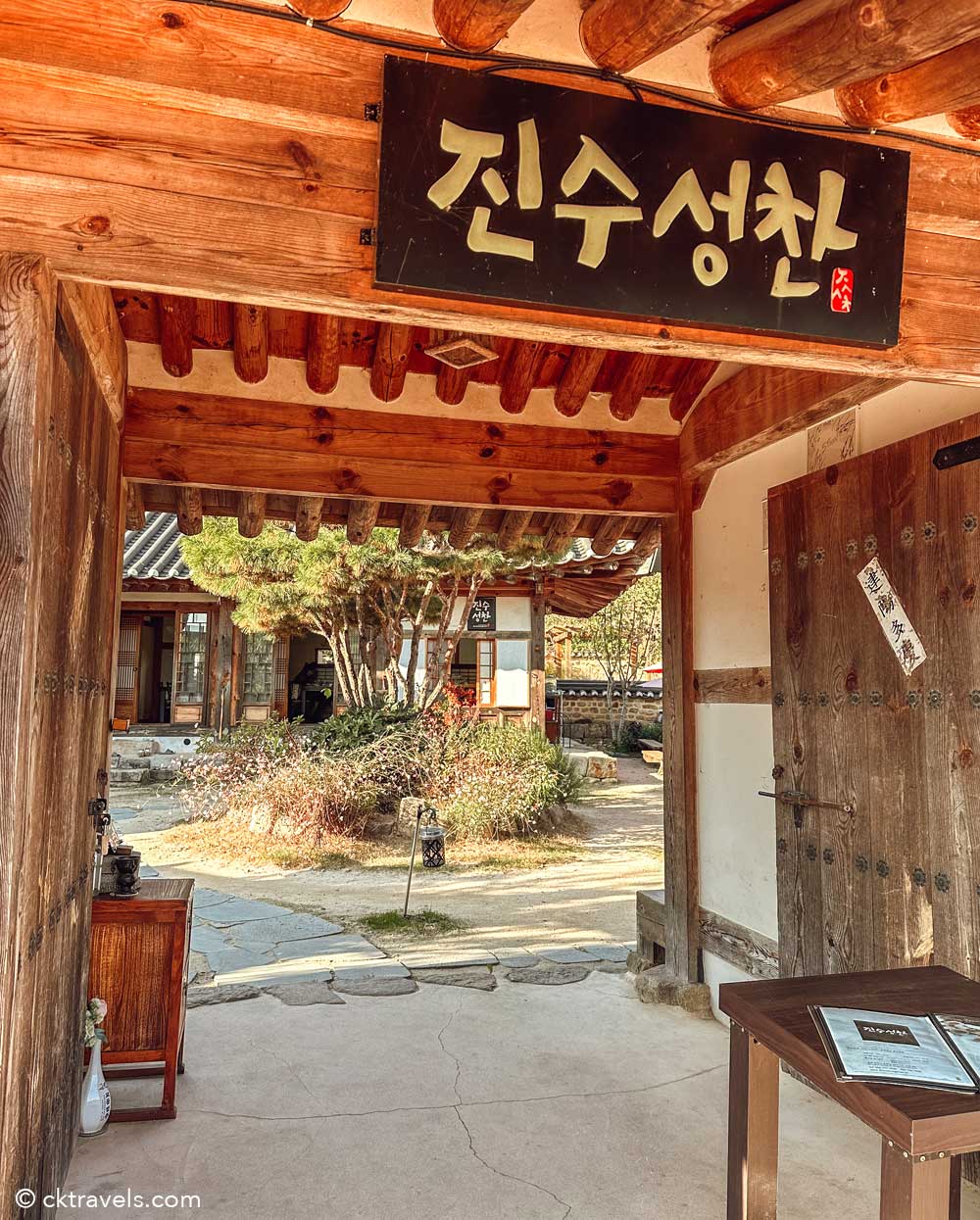
Join our New 2024 Facebook South Korea Travel Planning and Tips Group!
Need help with your itinerary or have any South Korea related questions? Head on over to our Facebook group!
Click here to join our group >
Kyochon Garam – Korean rice cake and ice cream dessert cafe
Easily the most popular cafe in the village, Kyochon Garam specialises in two dishes that create long lines of hungry visitors – handmade Korean rice cakes plus Injeolmi (rice cake) ice-cream chimneys.
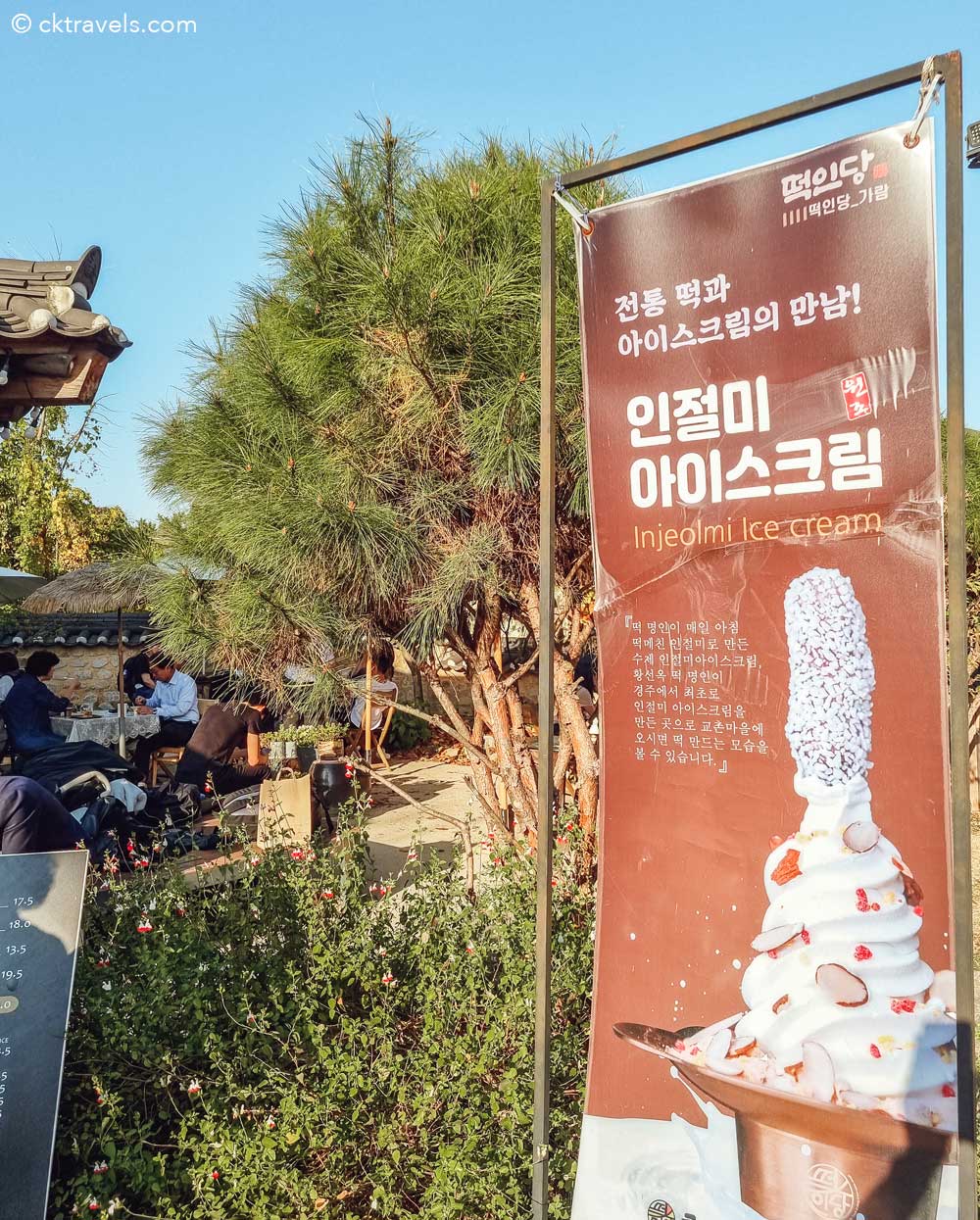
The injeolmi ice-cream is made fresh daily by a master rice cake and was the first injeolmi ice-cream in Gyeongju – enjoy your super n-’ice’ creation in the courtyard garden afterwards.
Like injeolmi? Then check out all the HBAF almond flavours (30+) including injeolmi >
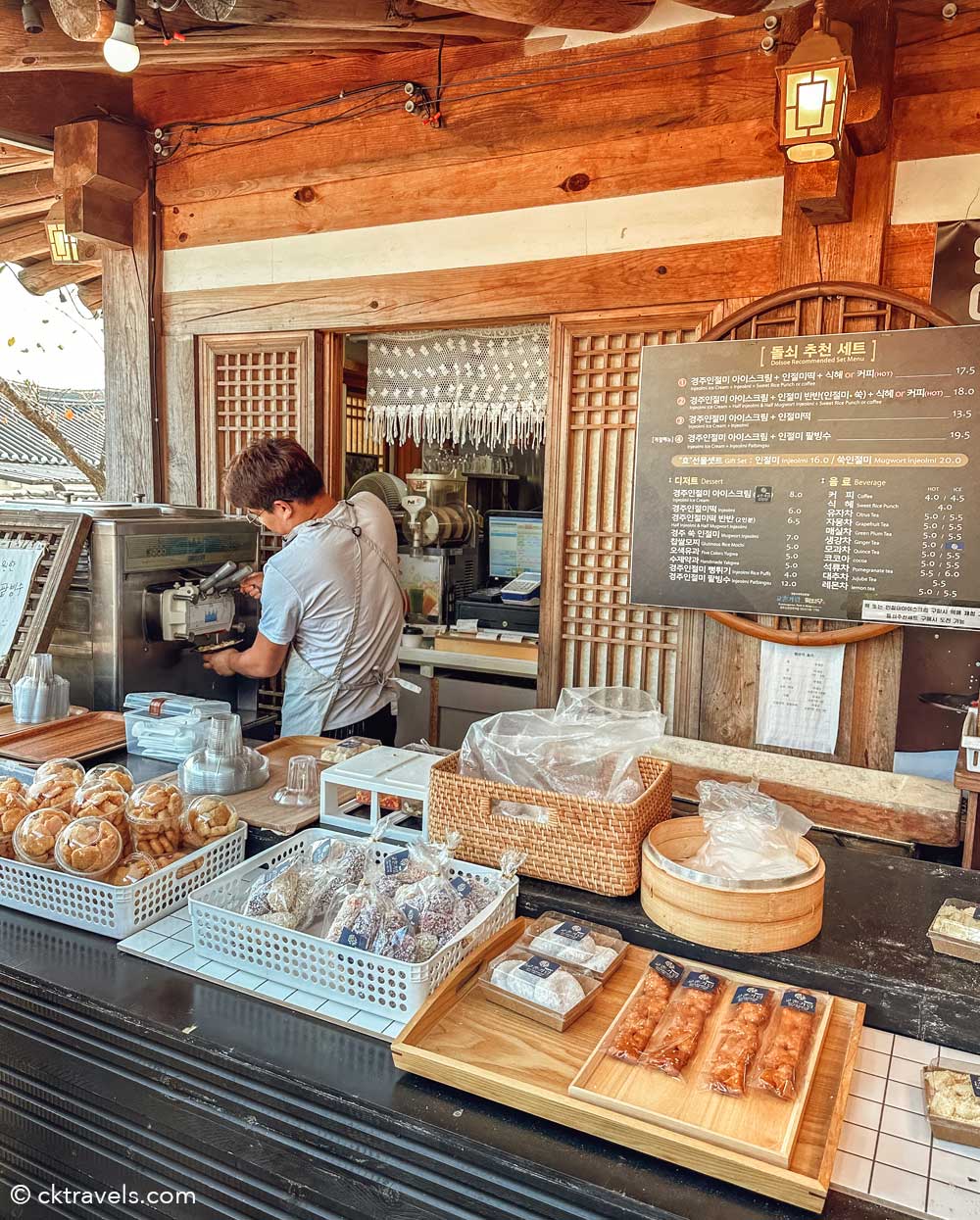
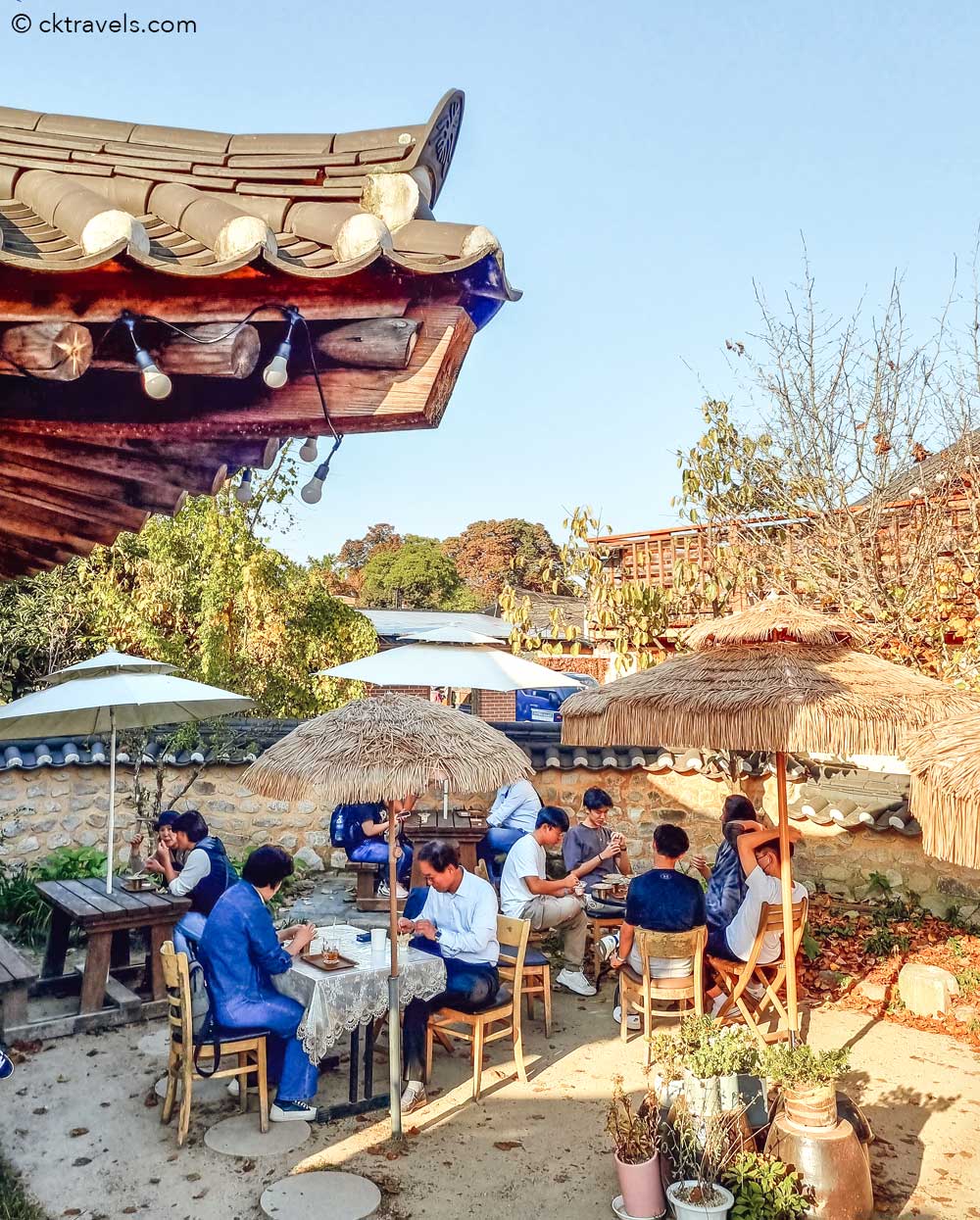
Other things to do near Gyeongju Gyochon Traditional Village
Make a day of it in when visiting the village and also check out these other Gyeongju attractions next door:
Woljeong Bridge
Just across the path from Gyeongju Gyochon Traditional Village (less than 1 minute walk) brings you to Woljeong Bridge, one of the best things to do in Gyeongju and Korea’s largest wooden bridge.
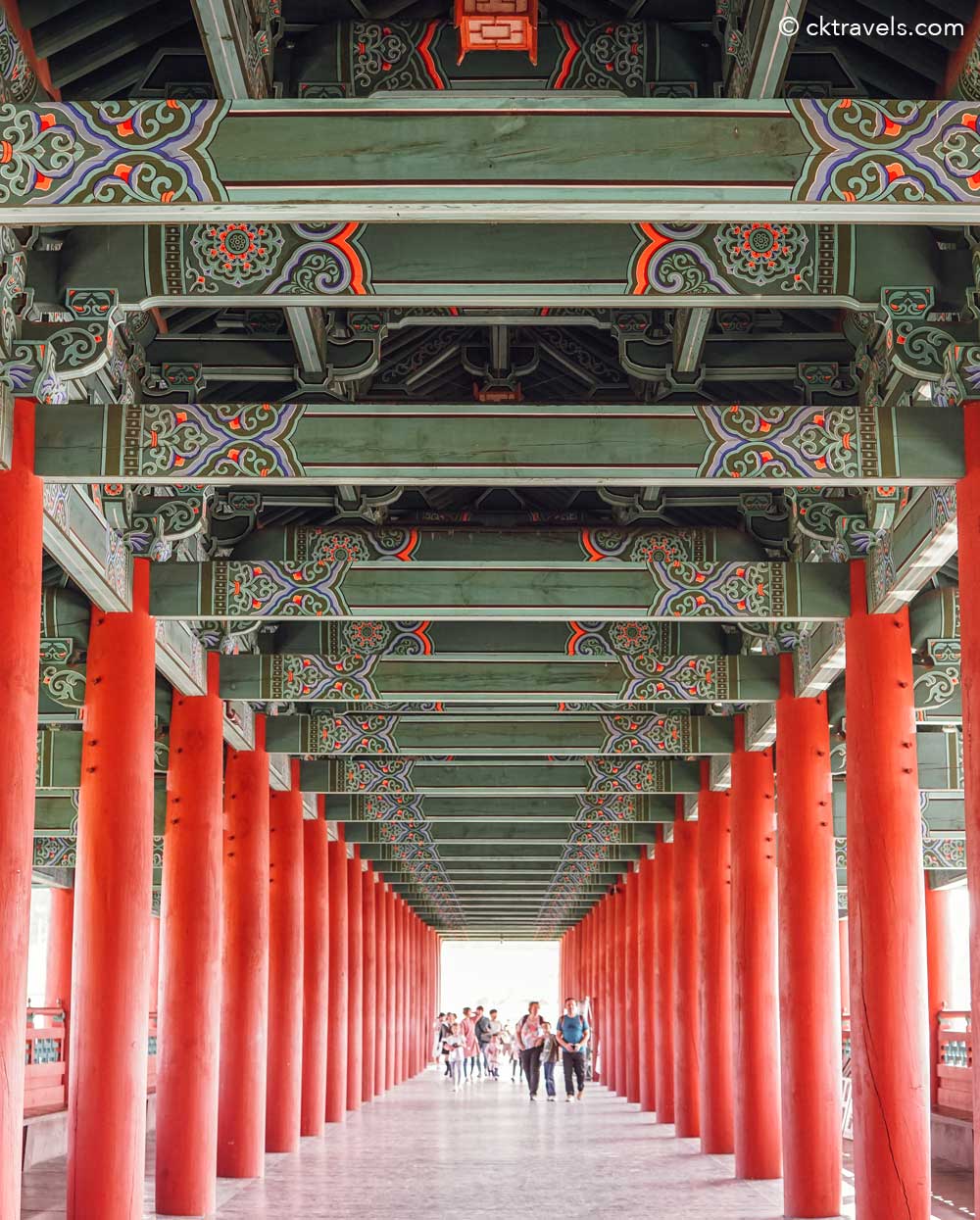
A reconstruction of a Silla Dynasty bridge that was originally built in the 8th century, this beautiful bridge was rebuilt over several years and reopened in 2018.
Free to visit and to cross, Woljeong Bridge also offers a different perspective and vantage point of the traditional village.
You might like – Guide to the visit Busan Pass; how we saved over 70% on lots of Busan attractions >
Namcheon Stream and Stepping Stones
Flowing beneath Woljeong Bridge, Gyeongju’s Namcheon Stream is a popular picnic and picture spot, mainly because of the stepping stone platform that goes across from one side of Namcheon Stream to the other.
The Gyeongju stepping stones are easy to navigate (apart from the odd selfie taker who takes way too long) and free to visit.
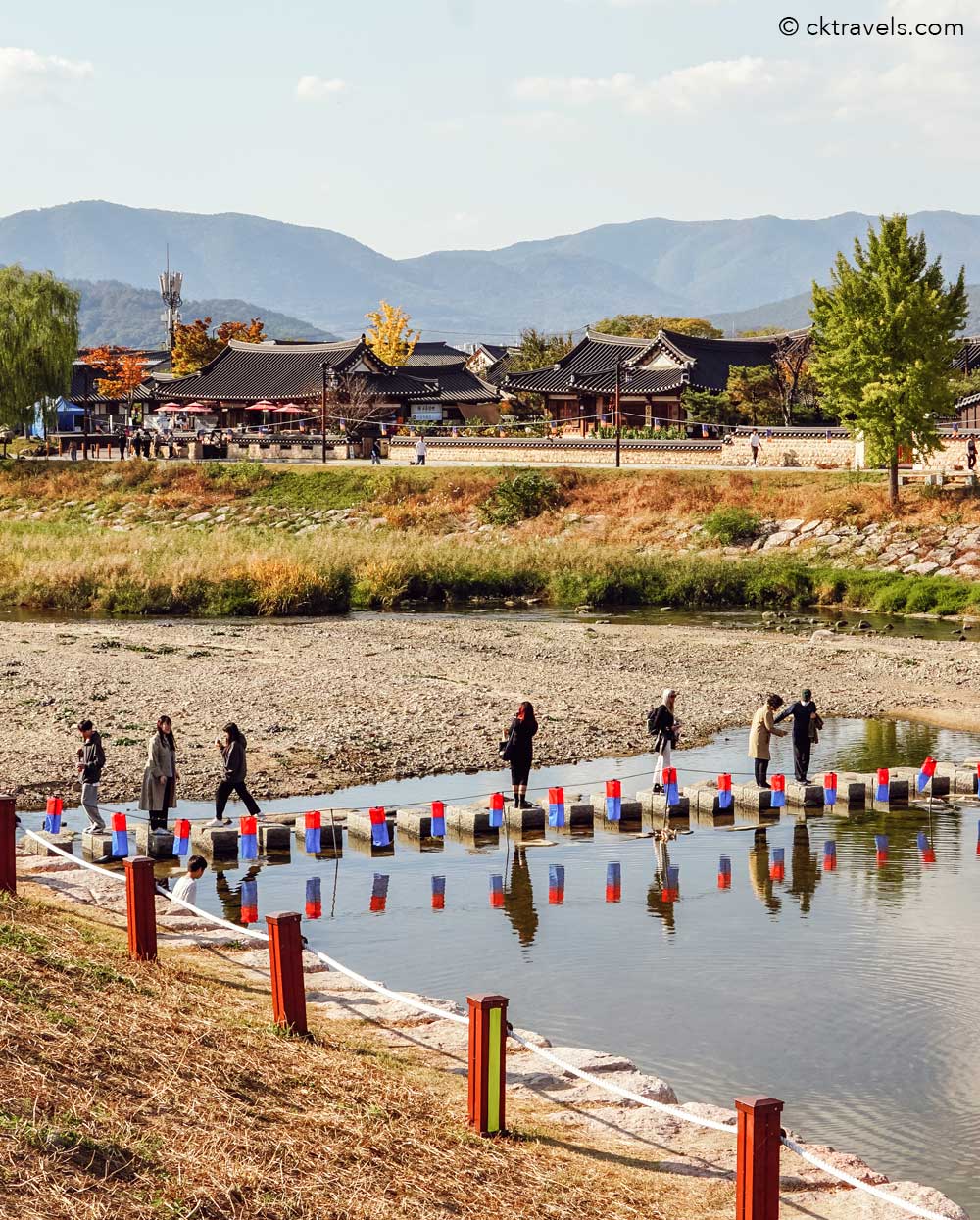
How to get around Gyeongju Gyochon Traditional Village
The actual Gyochon Traditional Village is quite easy to get around on foot and you can probably explore all the streets and alleys in about 30 minutes, if you don’t take part in any classes or eat at any of the restaurants / tearooms.
That said, we did notice several groups exploring the village on motorised carts (like golf buggies), which can be hired all over the city and are a popular / ludicrous (delete as appropriate) way to get around Gyeongju and the traditional Gyochon village.
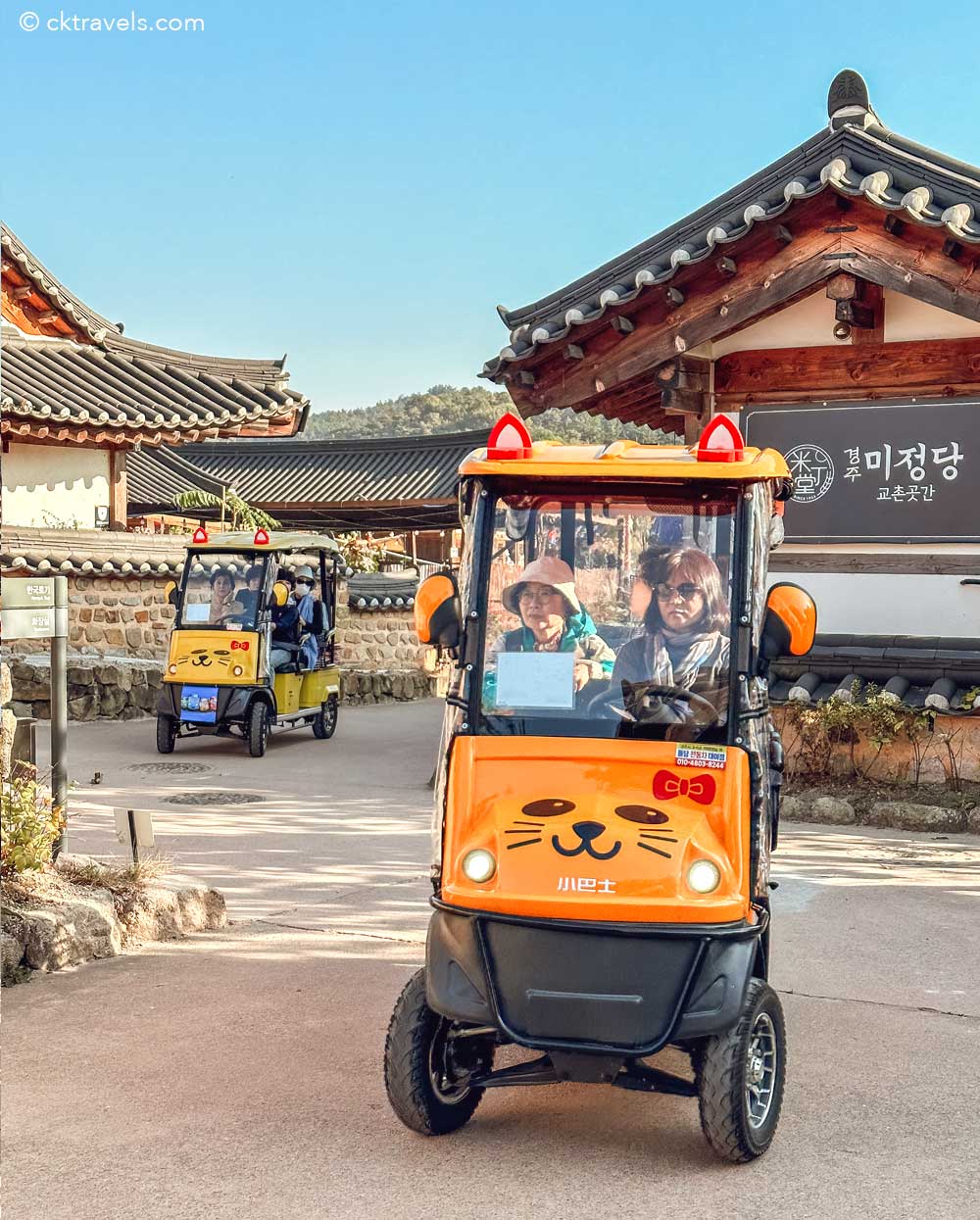
Other things to know about Gyeongju Gyochon Traditional Village
- Gyochon Traditional Village has free toilets onsite
- Ample car parking available
- Gyeongju Gyochon Traditional Village is open daily but some activities and restaurants seem to close on Mondays and Tuesdays.
- Some people still live in the village so be mindful of people’s property and privacy.
- There are some cute cats that laze about in the village – we aren’t sure if they are strays but they seem well looked after.
- Gyeongju Gyochon Traditional Village is pet friendly and even some of the restaurants have signs with cartoon dogs saying ‘Dogs are welcome’
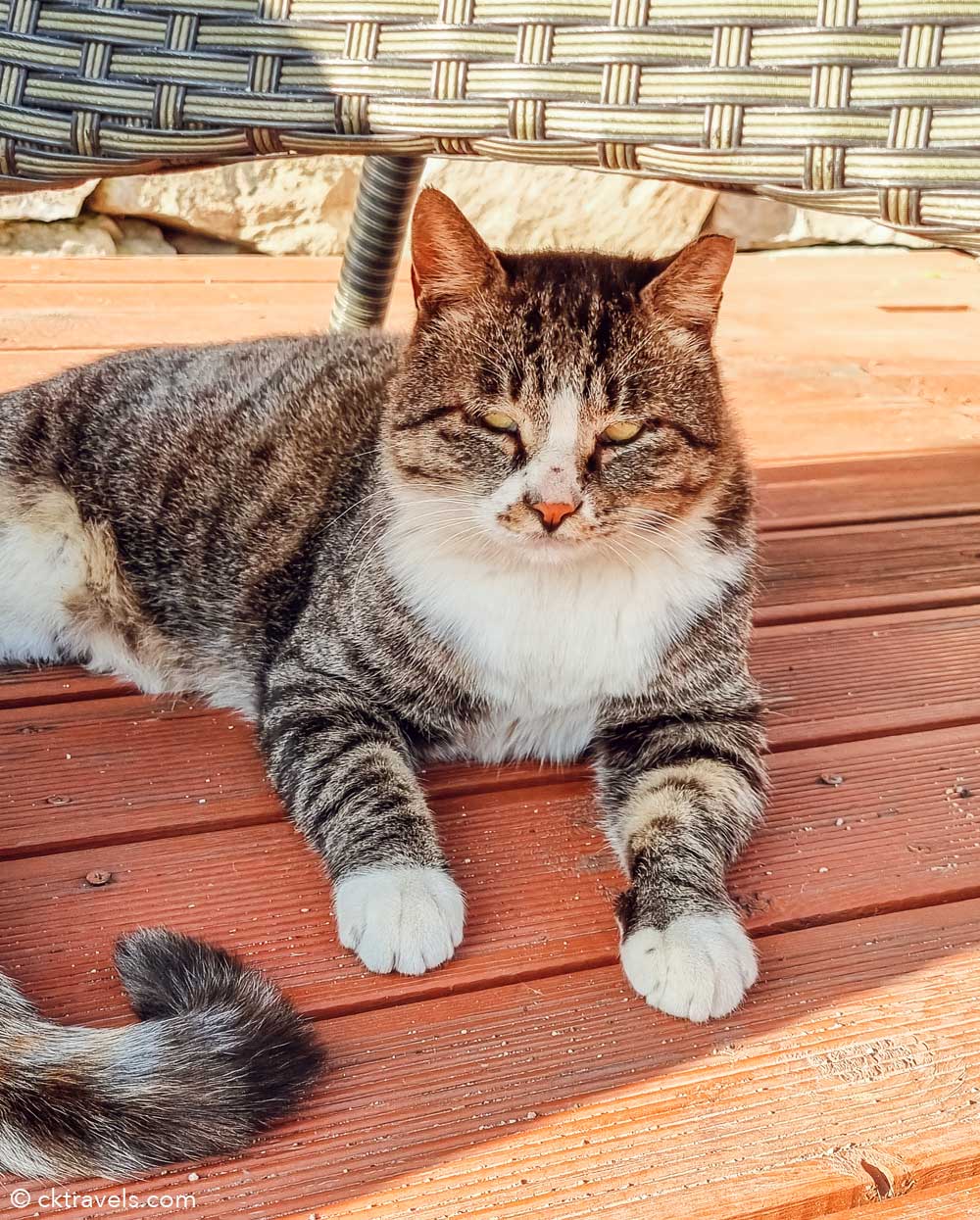
You might like – Guide to going to baseball game in Seoul >
Is it worth visiting Gyeongju Gyochon Traditional Village?
One of the nicest free activities in Gyeongju, Gyochon Traditional Village is a pretty place to walk around, learn about traditional Korean crafts and culture and eat nice food in a semi-historic setting (although many of the buildings are ‘faux’ old).
Located on the river’s edge, this is a popular place to hire traditional hanbok and there are lots of activities to try or cafes and restaurants to enjoy (although all come at a price).
Popular with coach groups, Gyeongju Gyochon Traditional Village is a good activity to combine with nearby Woljeong Bridge, Namcheon Stream and the stepping stones.
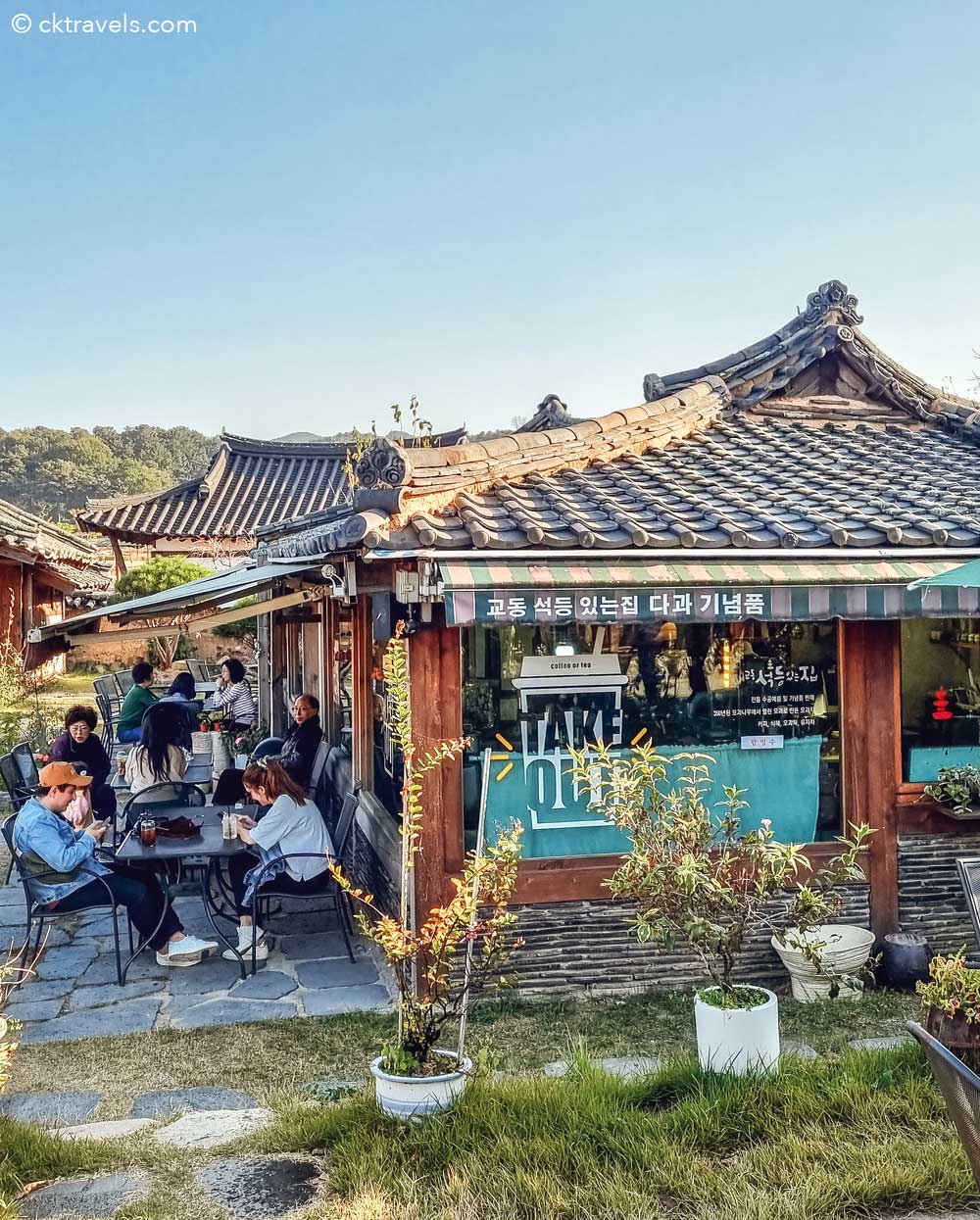
Gyeongju Gyochon Traditional Village address
39-2 Gyochon-gil, Gyo-dong, Gyeongju-si, Gyeongsangbuk-do.
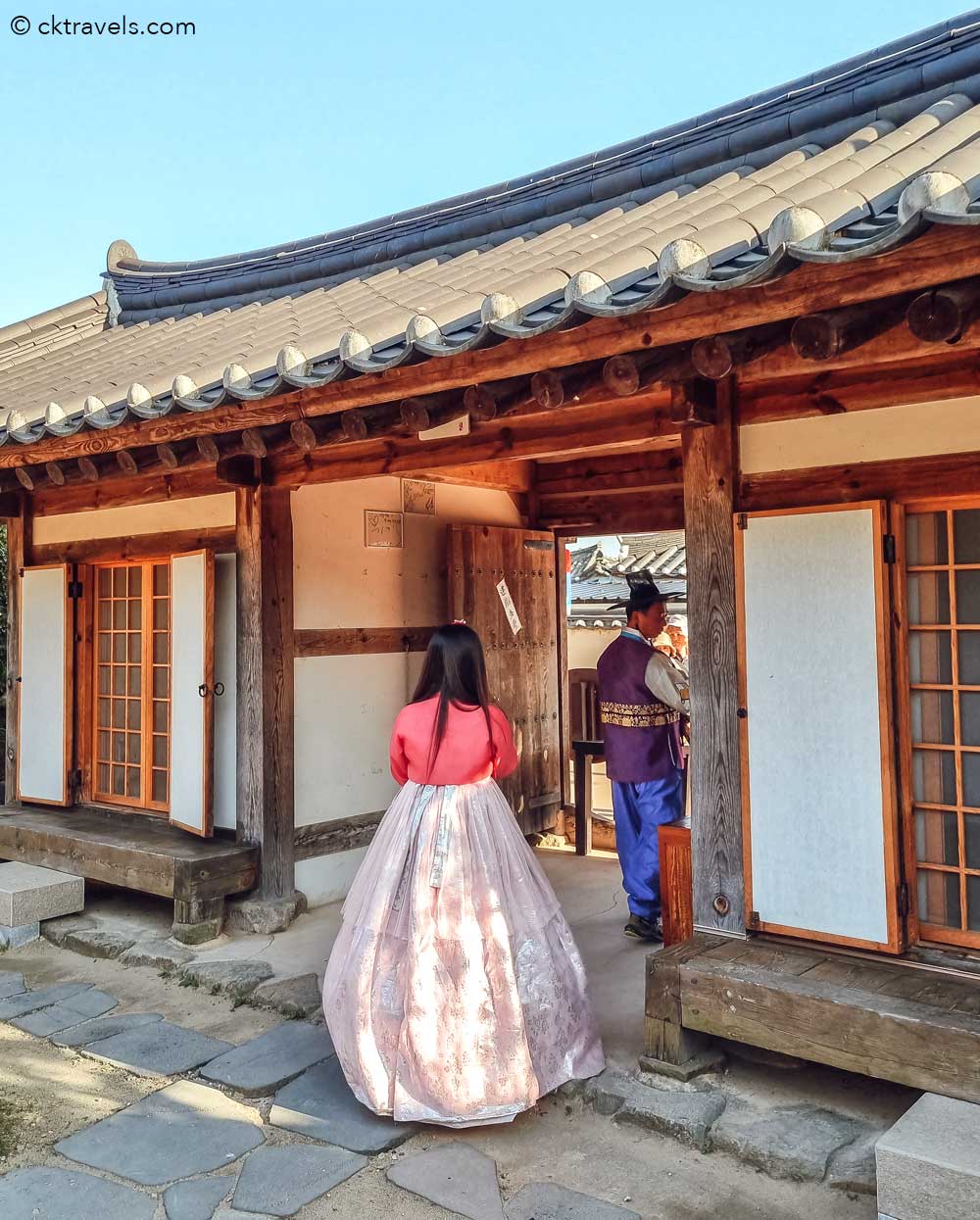
Other South Korea posts you might like
- Things to do in Busan, South Korea
- Busan to Gyeongju by bus (and how to buy tickets)
- Best things to do in Seoul, South Korea
- Best foods and drinks to try at Gwangjang Market, Seoul
- Things to do in Insadong, Seoul
- Nami Island in South Korea Guide
- Best neighbourhoods in Seoul guide
- Things to do in Myeongdong, Seoul
- Things To Do In Hongdae Guide
- Top things to do in Gangnam, Seoul
- Seoul at Night – Top Things To Do
- Things to do in Seoul with kids
- Top Korean street foods you must try in South Korea
- Netflix knife-cut noodle lady stall at Gwangjang Market, Seoul
- Discover Seoul Pass review – is it worth buying?
- Go City Seoul Pass – is it worth buying?
Did you like our blog? Let us know in the comments below:
You can follow CK Travels on:
Instagram
Facebook
TikTok
YouTube
Pinterest

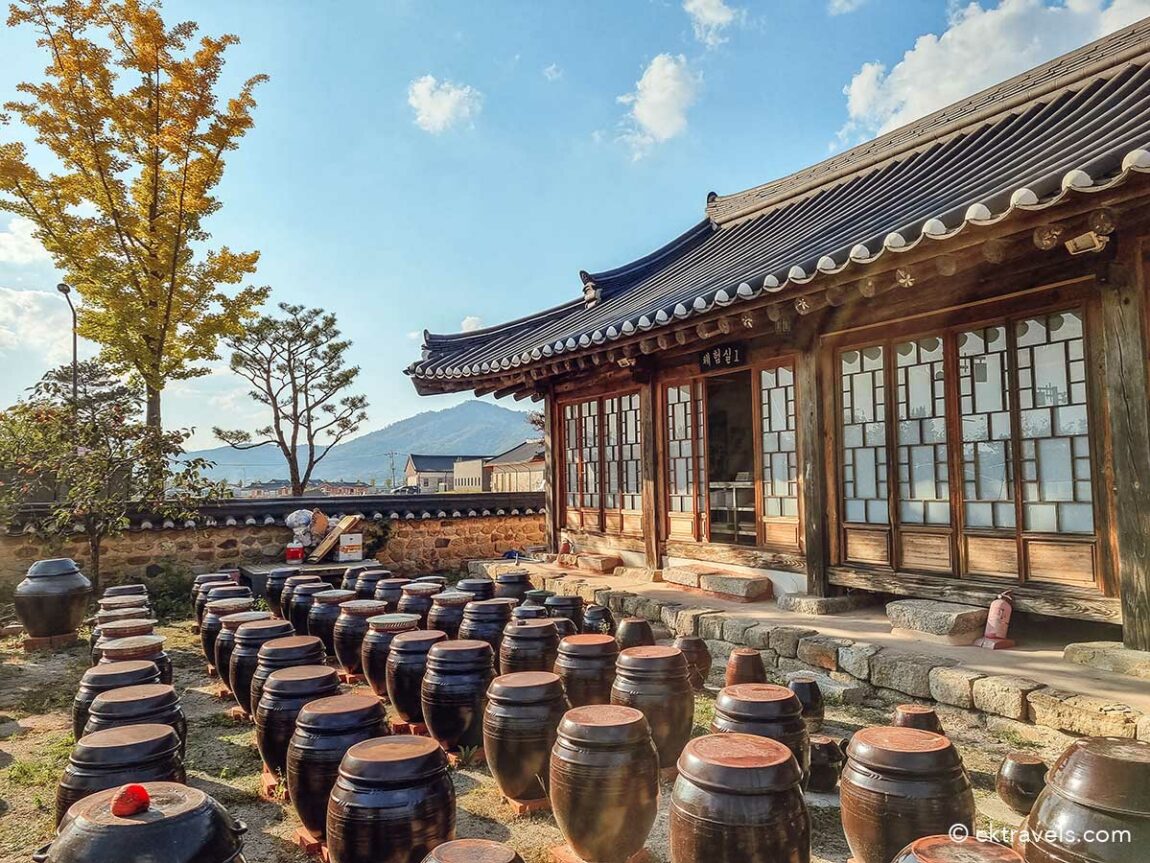
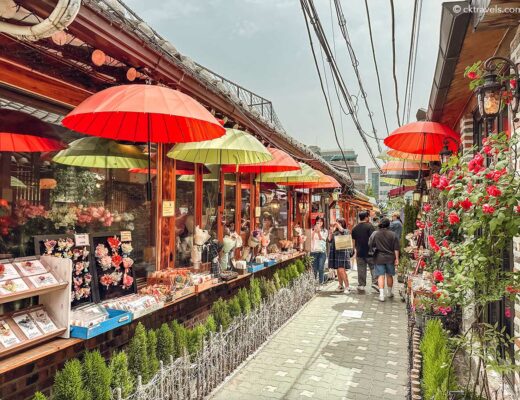
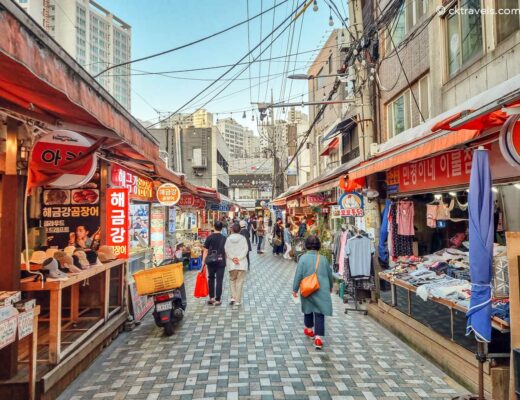
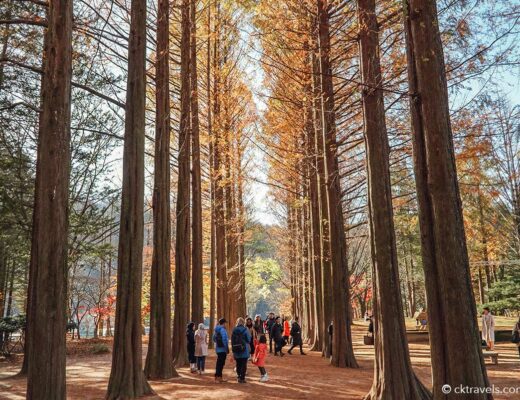
No Comments